'We want to eliminate the harm being caused by unregulated tourism.'
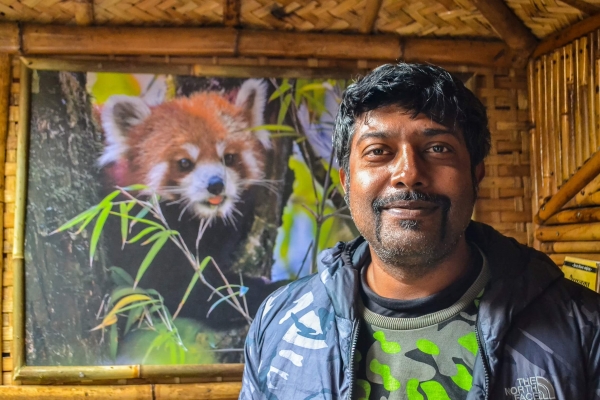
Shantanu is the director and project head of Habre's Nest, a wildlife travel enterprise on a mission to protect the red panda.

Shantanu is the director and project head of Habre's Nest, a wildlife travel enterprise on a mission to protect the red panda.
“I’ve had four years of experience in this region before we set up Habre’s Nest here in Kaiakata. Under the parent organisation Forest Dwellers, Habre’s Nest was our first project which is also rooted in sustainable tourism around rare species. While the red panda is our flagship animal, our intention is to protect the entire habitat. We undertake work where work is required but not enough is being done.
We decided to base our interventions here in Singalila because the belt extending from Nepal to the Indian states of Sikkim and Arunachal Pradesh onwards to Bhutan, Myanmar, and China, is the best remaining habitat for red pandas in the wild. Singalila can be considered the epicentre of red panda distribution and could play a vital role in enabling the fragments to connect.
We chose Kaiakata even though the weather can be harsh at times because the views are unobstructed and it is surrounded by greenery on the Nepal and Indian side of the border which increases the probability of sighting the red panda.
We've captured more than 4,000 photographs of wild red pandas over a period of four years through tourism and achieved 98 per cent sighting of the red panda for our guests since 2016.
Our goal is to assign this area the status of a red panda reserve, which would aid with conservation while continuing to track and document red pandas and hosting tourists who might be inspired to do something on their own. We want to continue working with government authorities towards improved regulation within and around the national park to minimise and eventually, eliminate the harm being caused by unregulated tourism.”
Read more about Habre's Nest here.
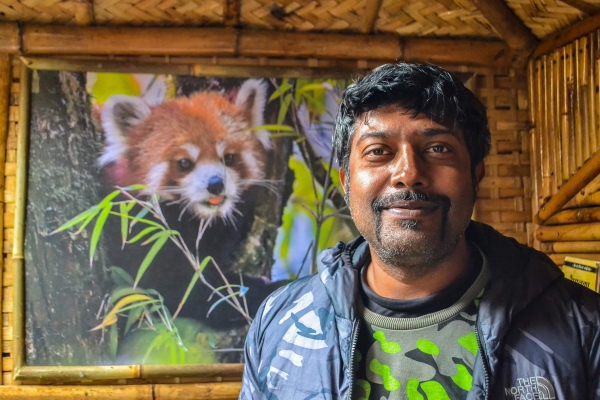
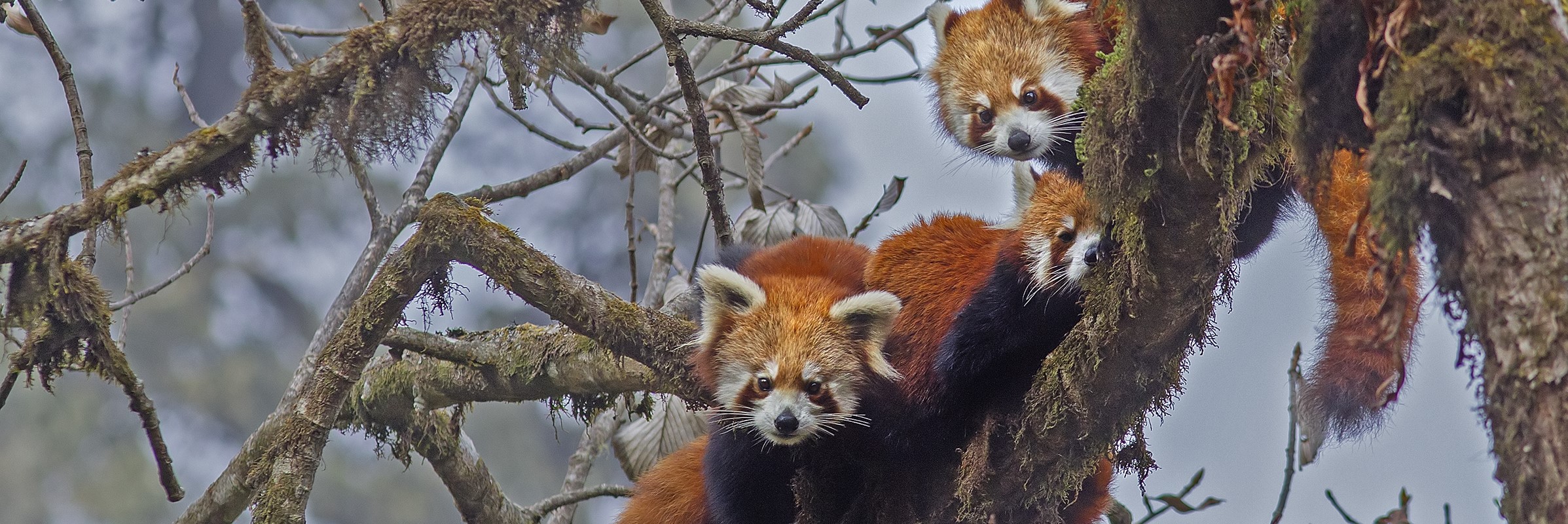
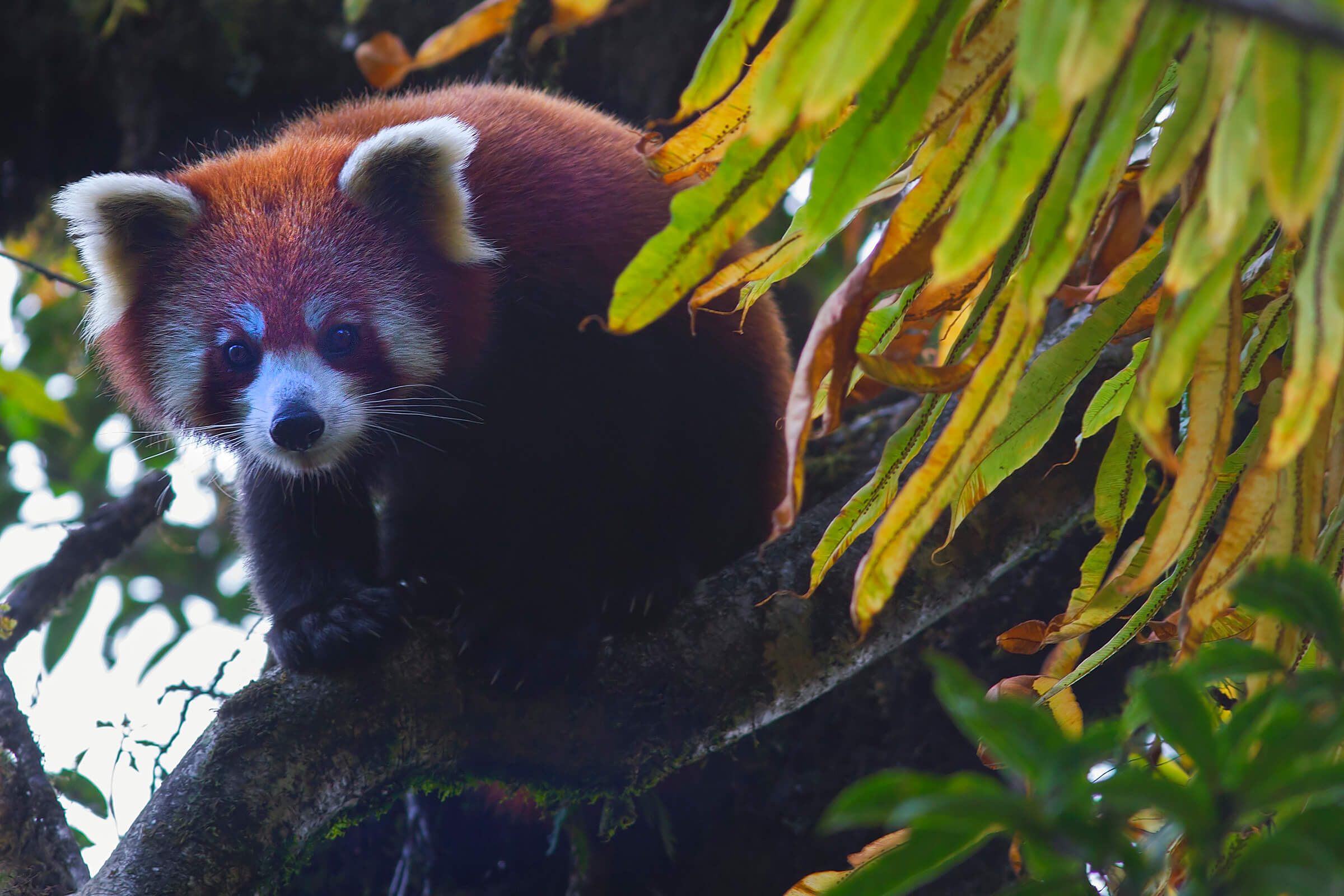
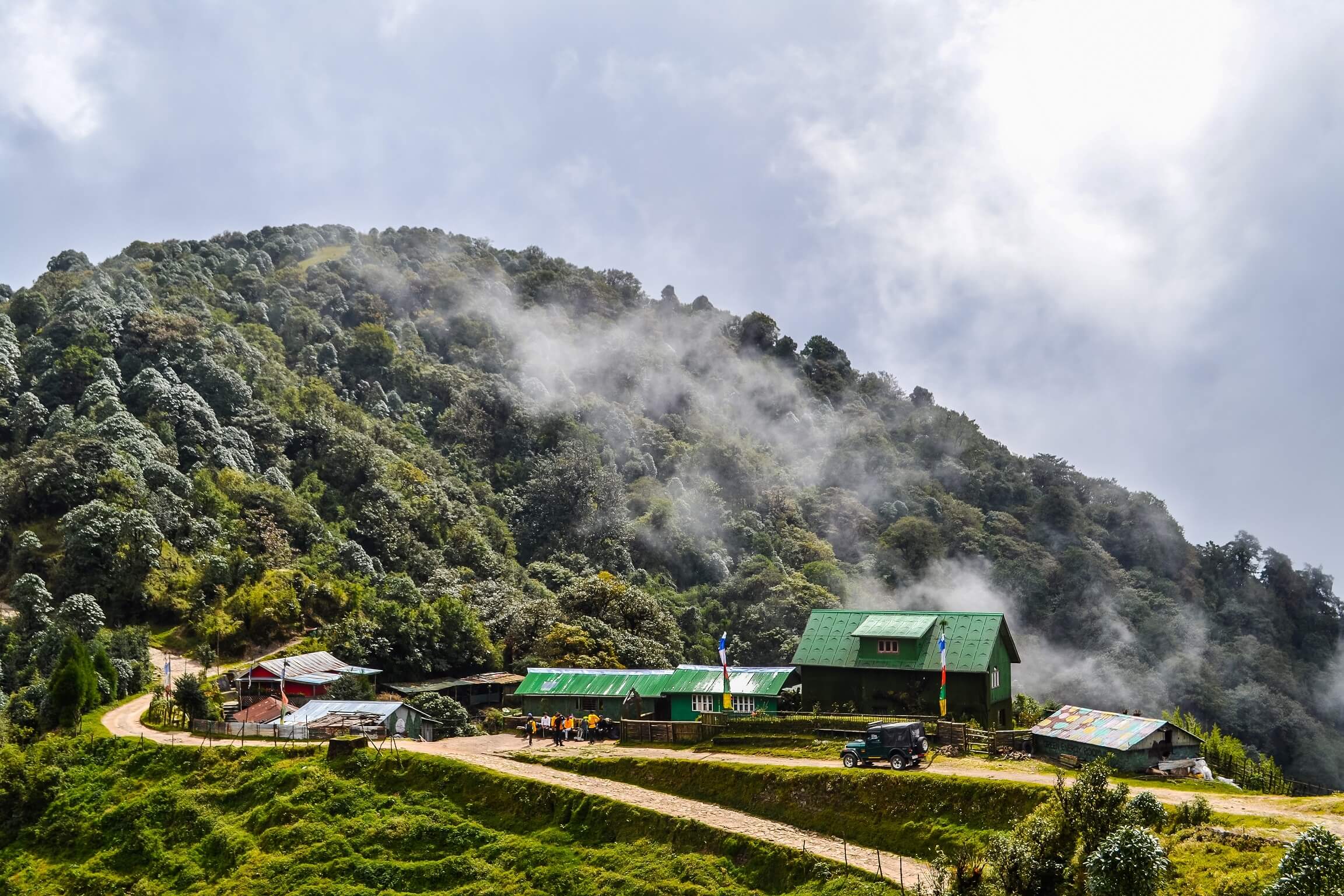

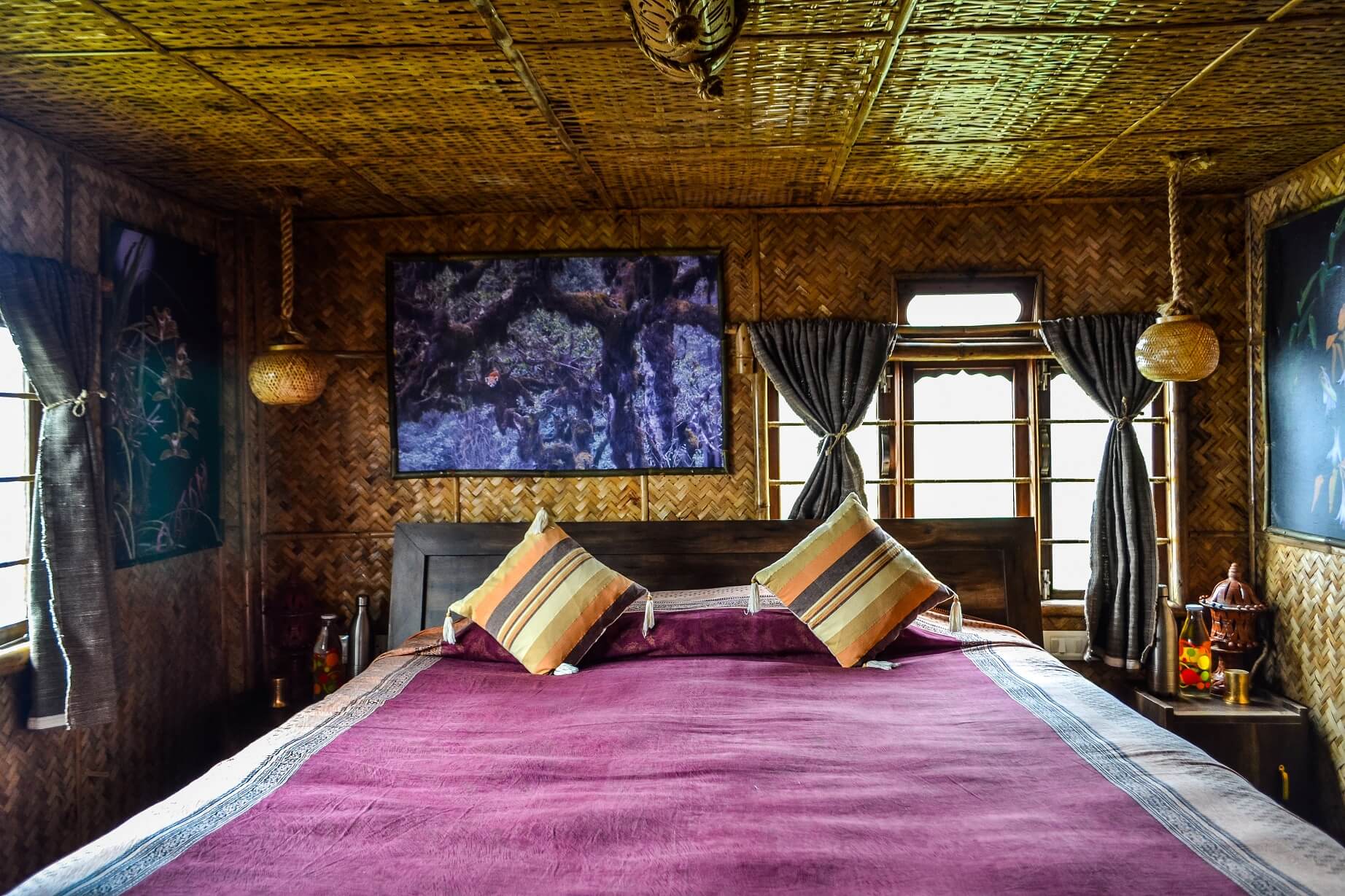
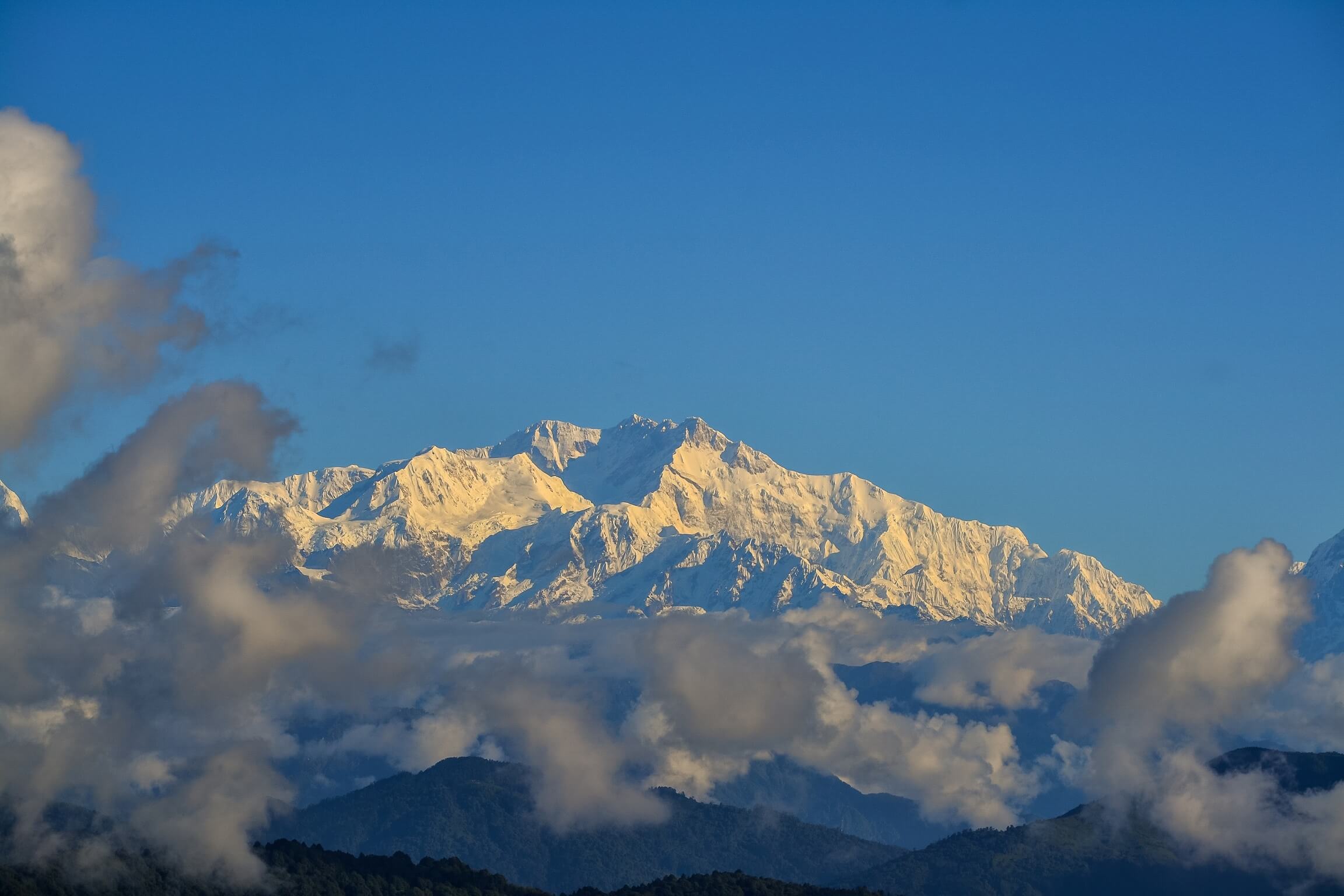
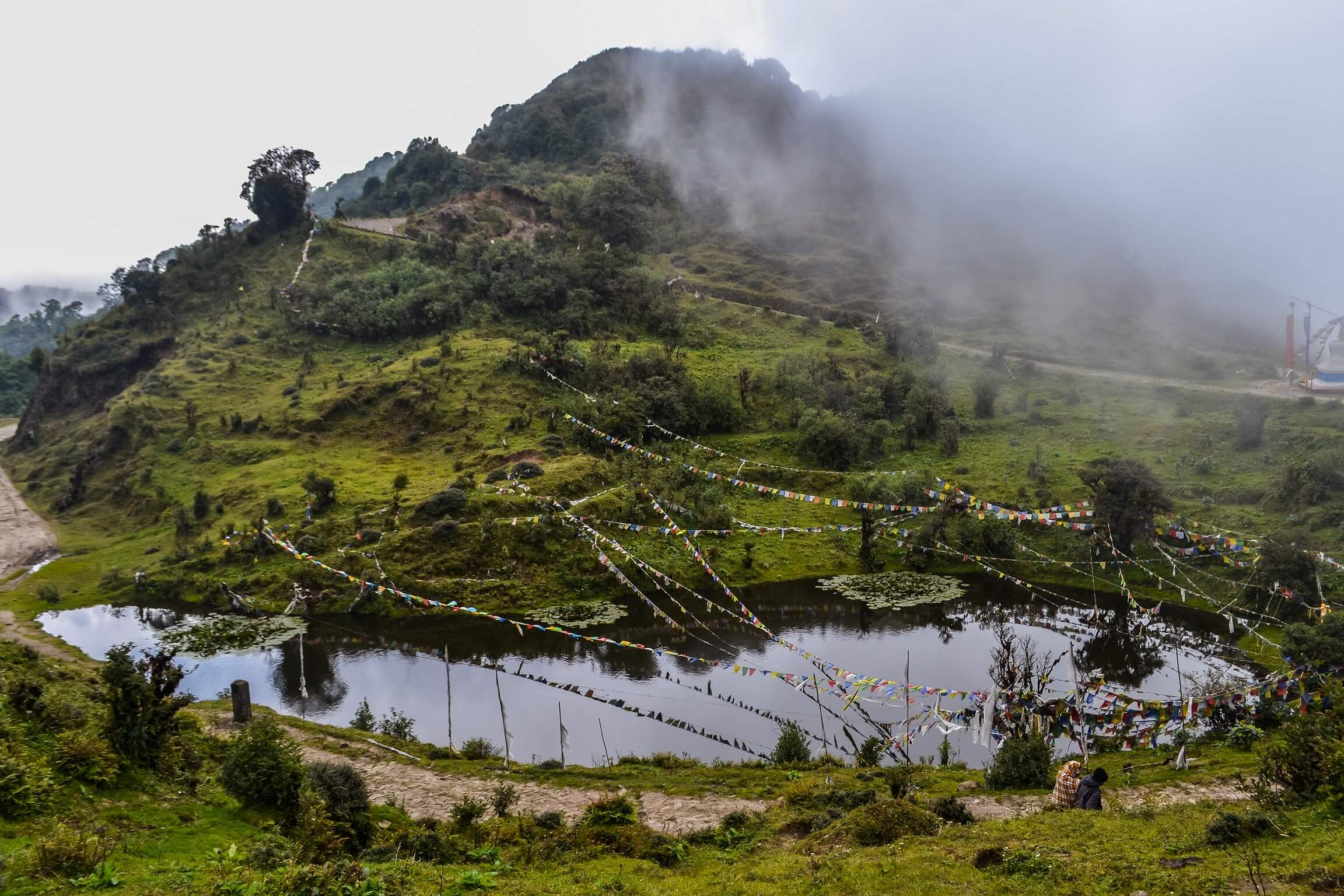
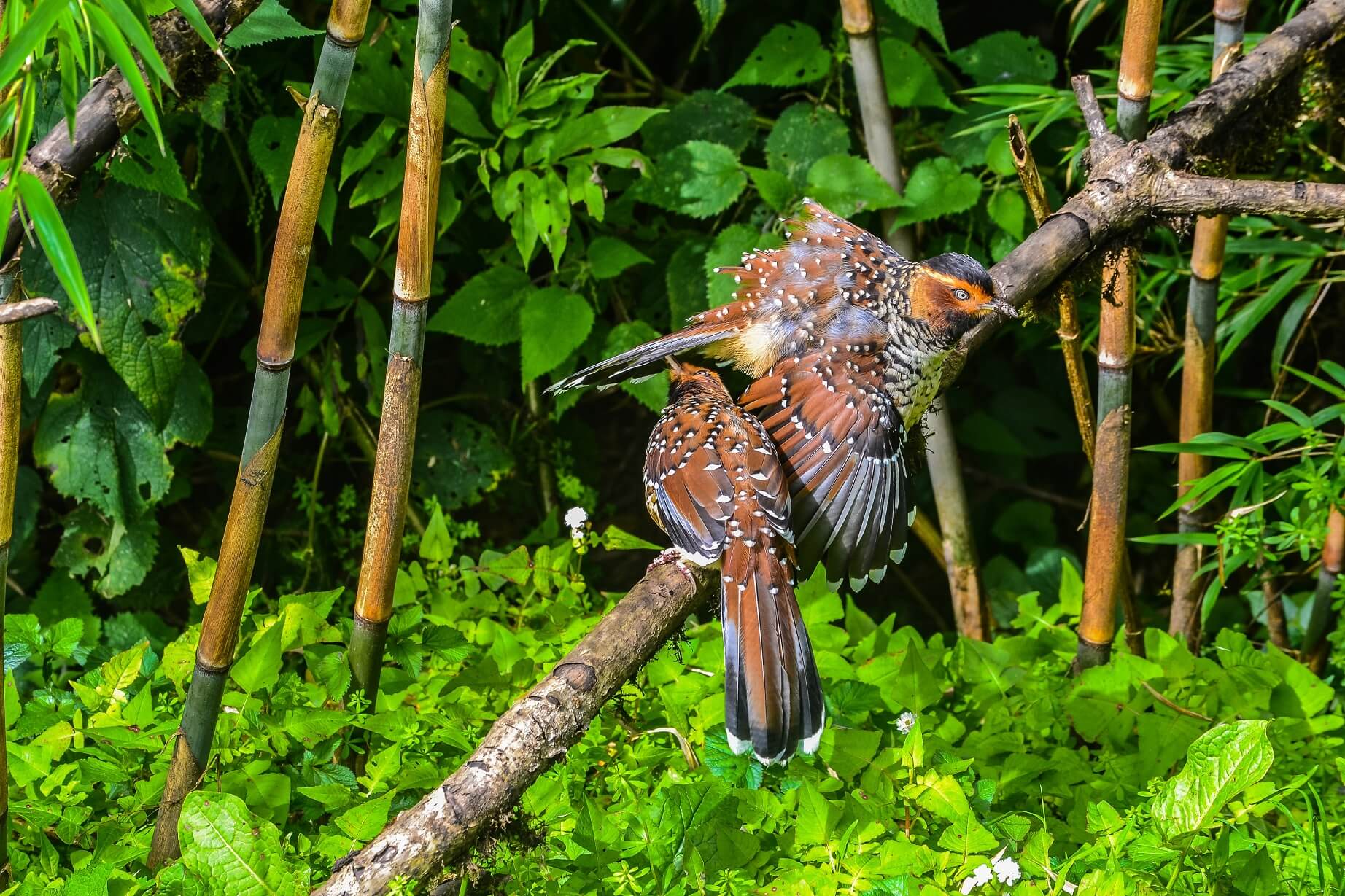
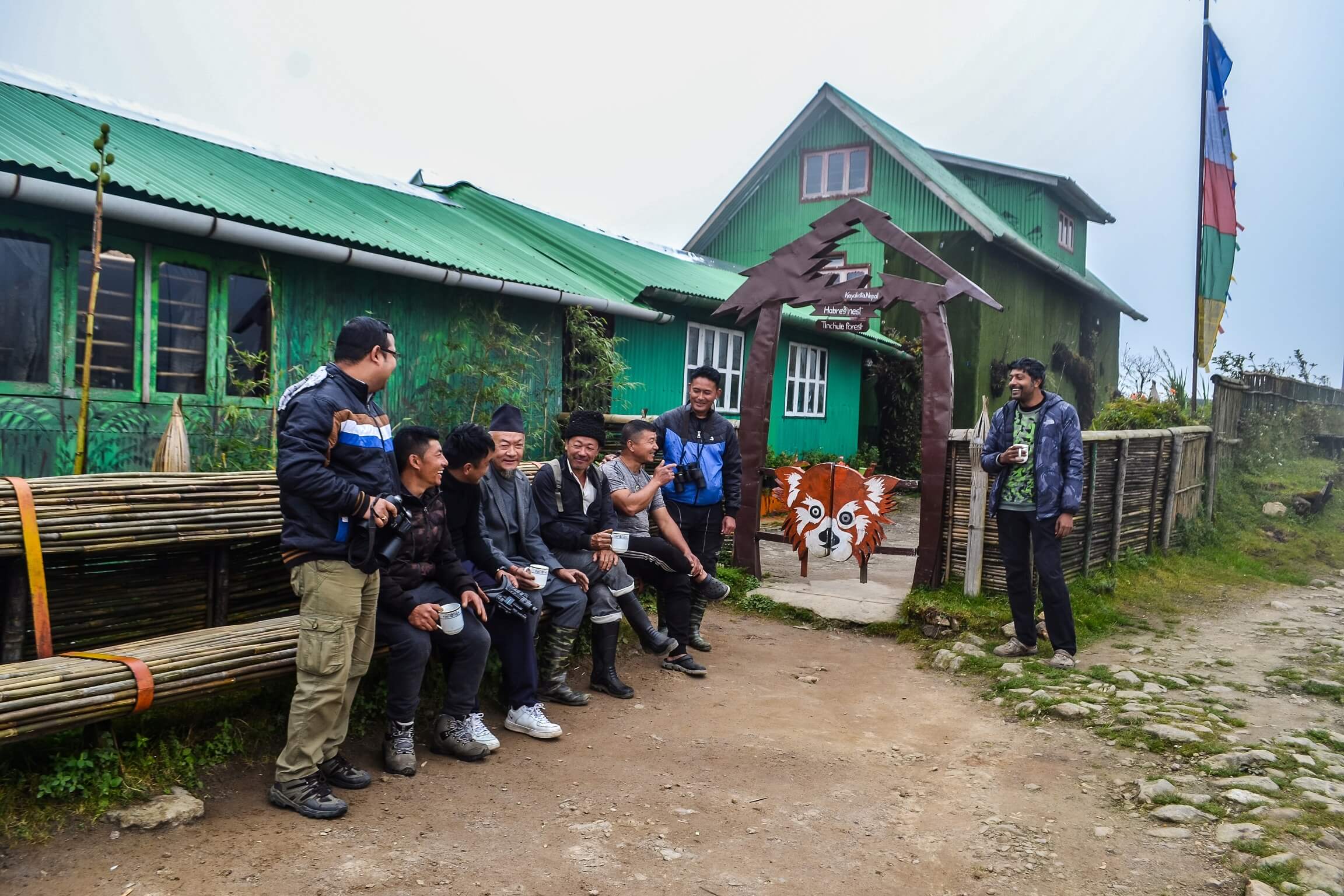
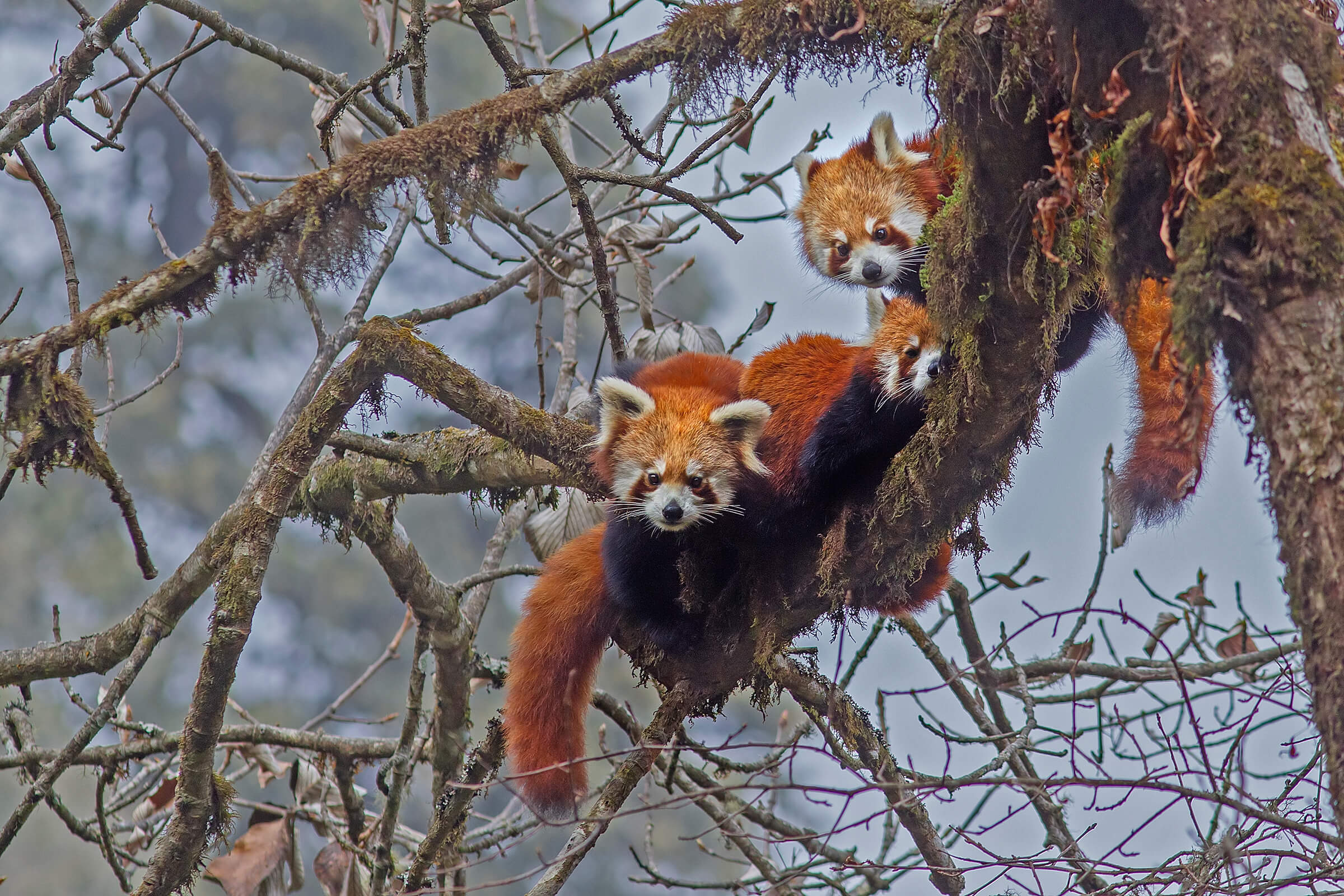
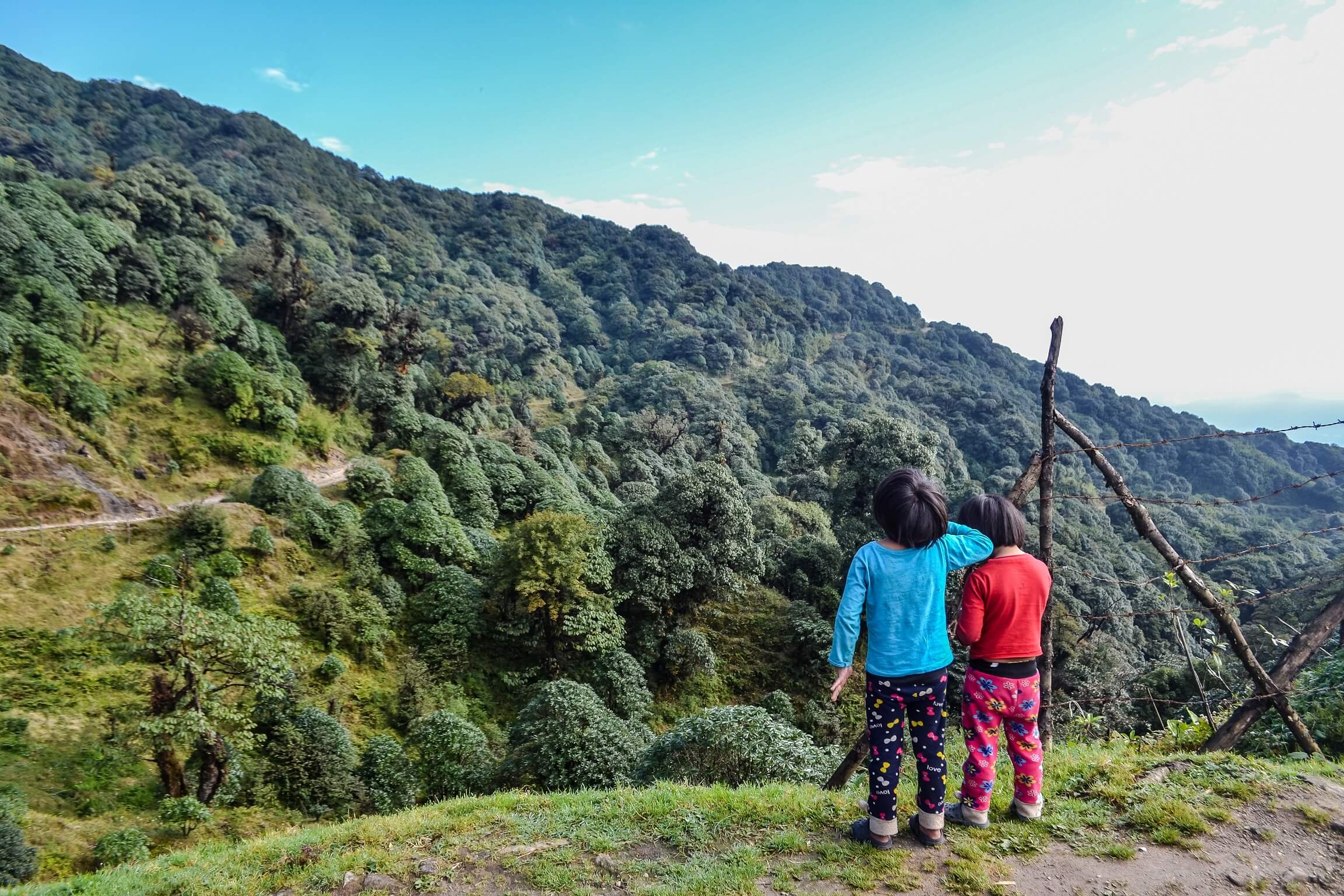
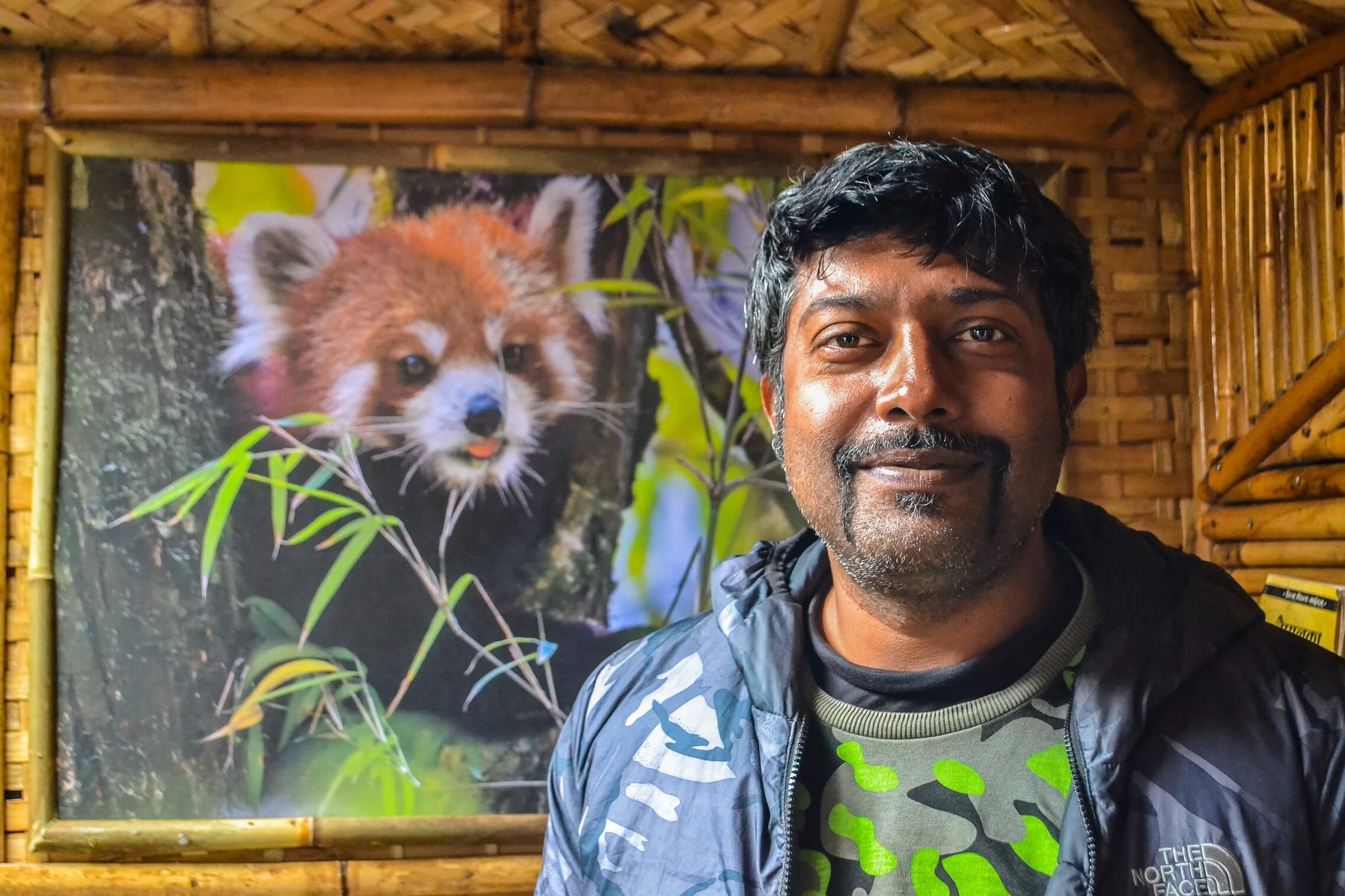
When COVID-19 put a halt to the stream of travellers who visit the far eastern Himalayas hoping to spot a red panda in the wild, one would imagine a blissful reprieve for the shy creatures.
“Actually, during the pandemic, poaching actually increased,” corrects photographer and conservationist Shantanu Prasad. “We can’t stop it all. We call the authorities. But they have weapons. We don’t.”
Each day, Shantanu and his team of rangers at Habre’s Nest patrol the Singalila Ridge, which straddles Nepal and India. Covering anything from 10 to 20km on foot each day, they watch out for poachers and record any sightings of red pandas, to contribute to research on these elusive animals.
But Habre’s Nest is more than just a beacon of community conservation — it is also a source of livelihoods, ensuring that some of the tourism dollars in this region benefit the local community. The rangers are also employed as hosts and guides to travellers, so that they can explore the region while minimising harm to the environment.
With travel back on the radar, Habre’s Nest hopes to see visitors again and channel funds back towards protecting the environment.
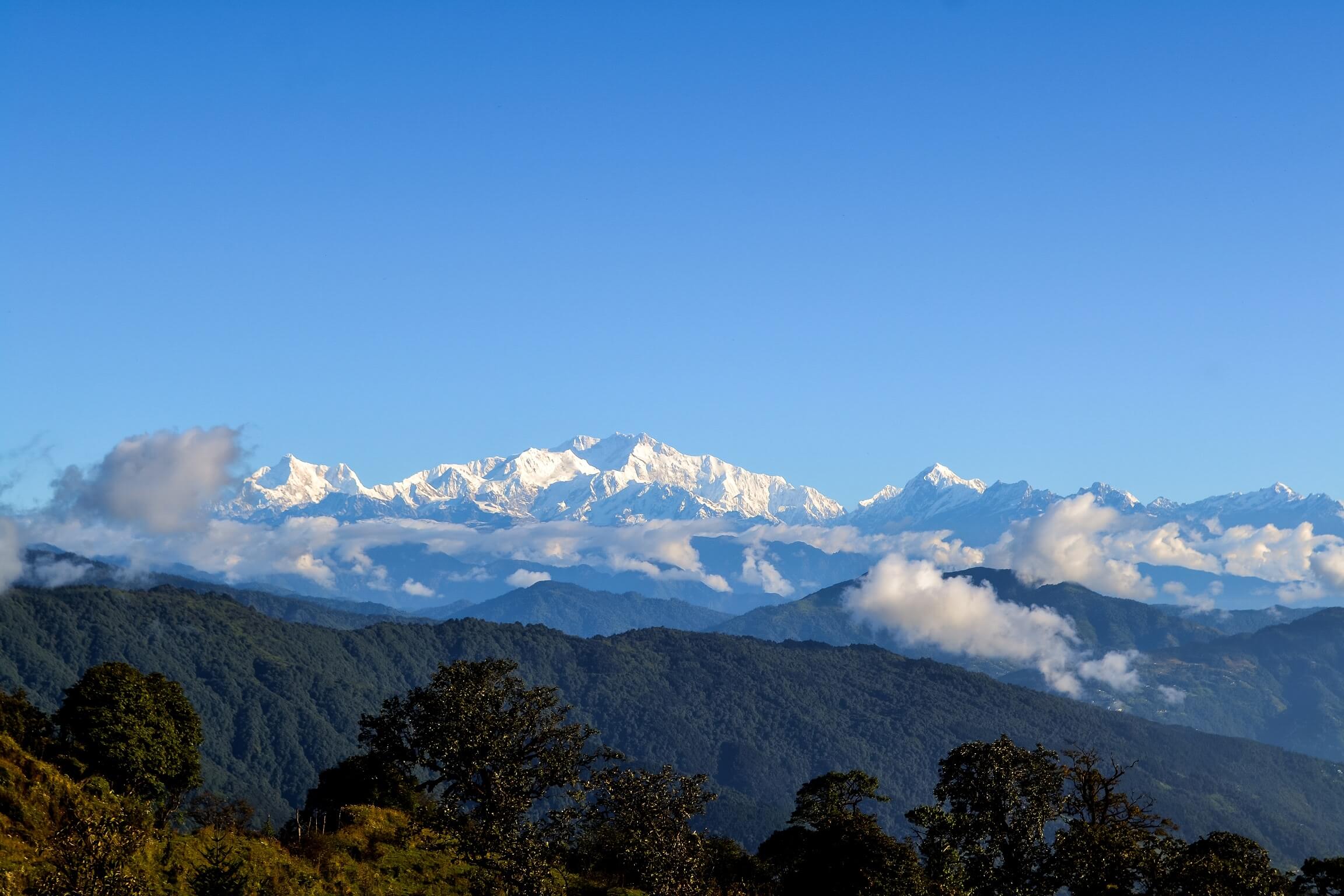
Though daily sightings are currently reported by the Habre’s Nest team, this writer did not spot one during my three-day visit in 2019 (visitors are advised to stay a week to allow for higher chances of a sighting).
But while my expectations were high, surprisingly, I was not crushed by not seeing one. Instead, I went home enlightened by what I learnt about the tireless rangers, and thrilled by the stunning surroundings of the Singalila Ridge, which is more than just second fiddle to its famous russet-furred resident.
Stretching from central Nepal to northwest Yunnan in China, the Eastern Himalayas thread through Sikkim (India), Bhutan, the Tibetan plateau and northern Myanmar along the way. Ardent trekkers come to Singalila Ridge to complete the 50km trek from the town of Maneybhanjang to Phalut, the second-highest peak in West Bengal, India (3,595m). Others make for Sandakphu, the highest peak at 3,636m.
But for less rugged travellers, the route is also renowned as a vantage point to take in four of the world’s five highest peaks: Everest (8,848m), Kangchenjunga (8,586m), Lhotse (8,516m) and Makalu (8,485m).
An Indo-Nepali project, Habre’s Nest’s focus is on the wildlife that call the Eastern Himalayas home — protecting them and encouraging local communities to take up the mantle of conservation.
“Tourists aren’t always aware or sensitive about the forested areas they trek through and the wildlife that abounds within,” shares Shantanu, Habre’s Nest’s director
From trails being too crowded, to hikers making too much noise and leaving trash behind in the forest, “unregulated tourism”, as Shantanu puts it, is one of the biggest challenges faced by Habre’s Nest.
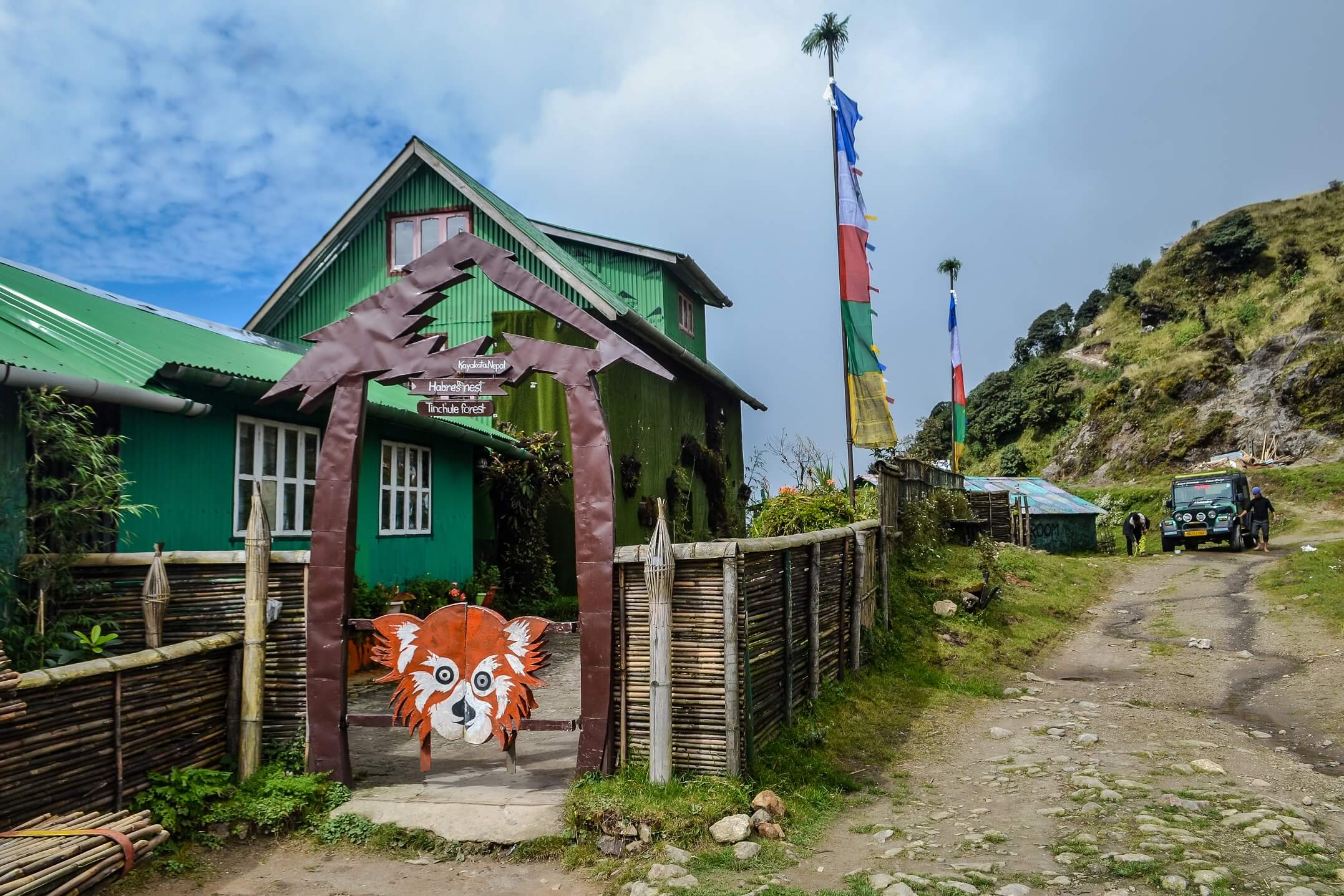
Habre’s Nest, which derives its name from the Nepali word for red panda, was formed by Shantanu after he learnt about the species’ endangered status.
Globally, less than 10,000 remain in the wild, living in the trees in mountainous regions. In the area earmarked for conservation by Habre’s Nest, there are just 32. An estimated 86 per cent of red panda cubs die within a year of being born; human activity is the main threat to the species.
In Singalila, the red panda’s main threats are feral dogs which may carry rabies and other diseases, and the clearing of forested land for wood and agriculture.
After identifying feral dogs as a key threat to red pandas, Habre’s Nest began holding vaccination drives for dogs with the help of animal welfare organisations, targeting dogs that belong to households as well as strays from nearby towns that follow trekkers around.
As they got to know the local community better, they realised there was a lack of medical facilities in the area. So they set up free medical camps, fostering greater trust.
This was followed by outreach sessions to create awareness of the need to protect the environment. Villagers were invited to attend training to monitor wildlife and record sightings in a 100sqkm area. Those working in the tourism sector were offered training to become more sensitive to wildlife.
When it ventured into wildlife tourism, Habre’s Nest made sure to hire only locally, ensuring that benefits from tourism stay local. “While the red panda is our flagship animal, our intention is to protect the Eastern Himalayas,” says Shantanu, who was a photographer before he became a conservationist.
Preserving the unique environment and wildlife of the area would in turn benefit locals in the long run as sustainable tourism also sustains livelihood opportunities.
Catching sight of wildlife is a game of chance; after all, truly wild creatures do not show up on demand to delight travellers.
Habre’s Nest recommends staying at least seven nights for higher chances of a sighting. This includes factoring in the altitude’s unpredictable weather and a day of travel to Kaiakata, which is on the Nepal side of the ridge.
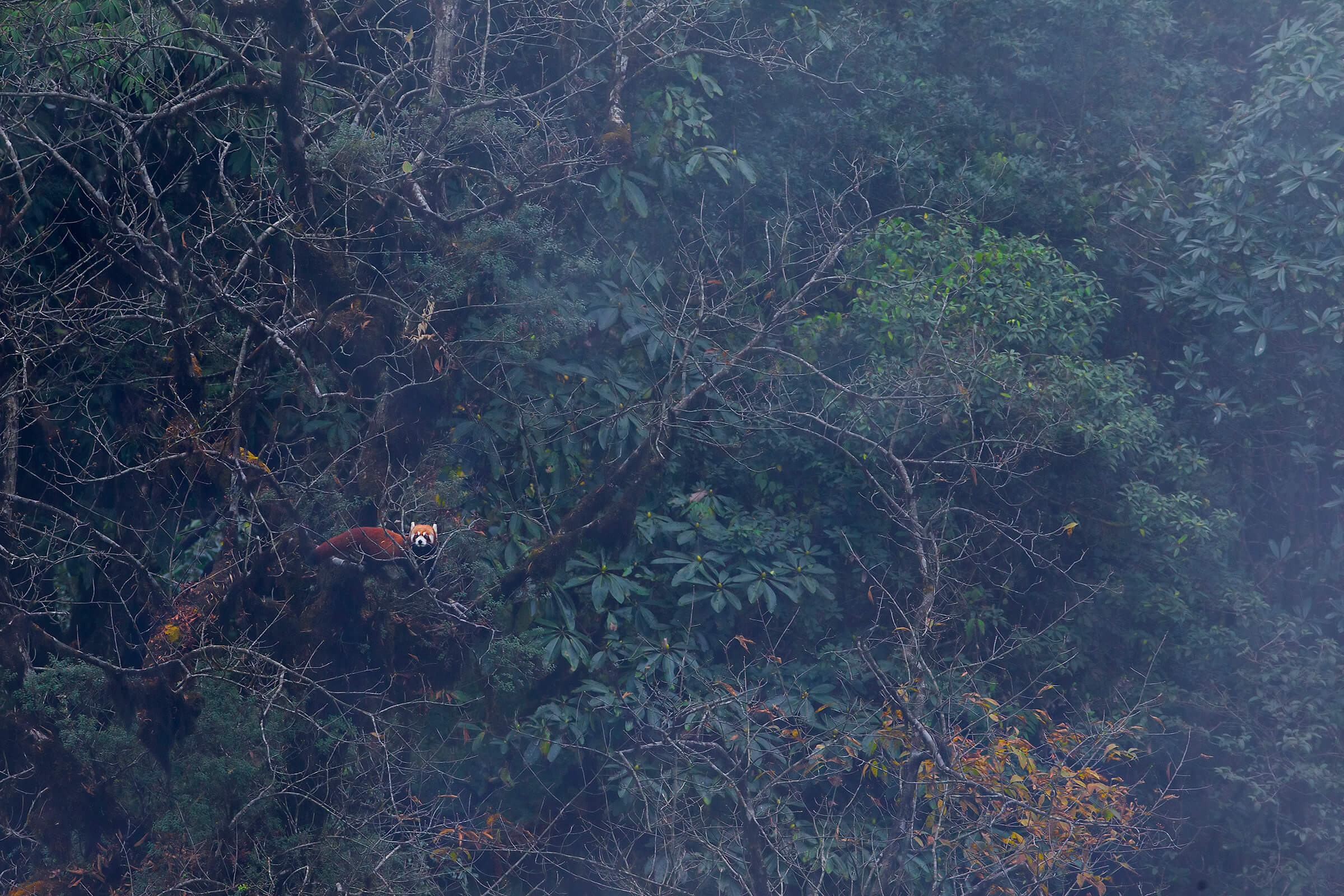
Guests do not take part in tracking red pandas; a walk to see the red pandas is only arranged when rangers spot one on patrols. Each visit lasts no more than 15 minutes.
In the meantime, guests can also spend their time at the bird hide on the premises. I was able to effortlessly pass a few hours here — clicking a few photographs every now and then of the avian company, so I could learn their names later from the in-house naturalist.
For hikers, short trek options to Kalipokhri, known for its lake with dark waters, and to Tumling, a renowned viewpoint of both Kanchenjunga and Everest, are options.
The Habre’s Nest team includes ex-poachers who now work as rangers, and double up as guides for guests, as well as manage the kitchen and homestays. Mohan Thami, a ranger at Habre’s Nest, shares, “Before, the means for livelihood were threadbare so people would set traps and poach. Today there’s awareness and a change in behaviour.”

“As trackers, we do our bit to sensitise villagers. After all, it’s because of the red panda and the training that Kaiakata has gotten visibility and sees tourists from all over the globe.”
Mohan Thami Ranger, Habre's Nest
Currently there are 11 full-time and nine part-time staff. Habre’s Nest’s lodge comprises four rooms, which can house a total of eight to 10 guests. Twenty per cent of the profits are directed towards its conservation efforts, such as local outreach on forest protection.
Shantanu notes that a comprehensive census for red pandas is currently underway, with photograph-based evidence being shared with the International Union for Conservation of Nature (IUCN).
“Our goal is to assign this area the status of a red panda reserve – which would aid with conservation while continuing to track and document red pandas while hosting tourists who might be inspired to do something to protect the red pandas,” he shares.
“We want to continue working with government authorities towards improved regulation within and around the national park to minimise and eventually eliminate the harm being caused by unregulated tourism.”
A visit to Habre’s Nest empowers the local community to protect the environment and the species, while uplifting local livelihoods.
In addition to hiring locals as patrol rangers and in hospitality roles, Habre’s Nest dedicates 20 per cent of its profits to its non-profit arm, the Wildlife Awareness Trust for Empowerment and Research (W.A.T.E.R.)
Even when COVID-19 hit the tourism industry hard, Habre’s Nest continued to employ its rangers to patrol the forests for poachers.Read more about Shantanu of Habre's Nest here.Read more about Mohan of Habre's Nest here.
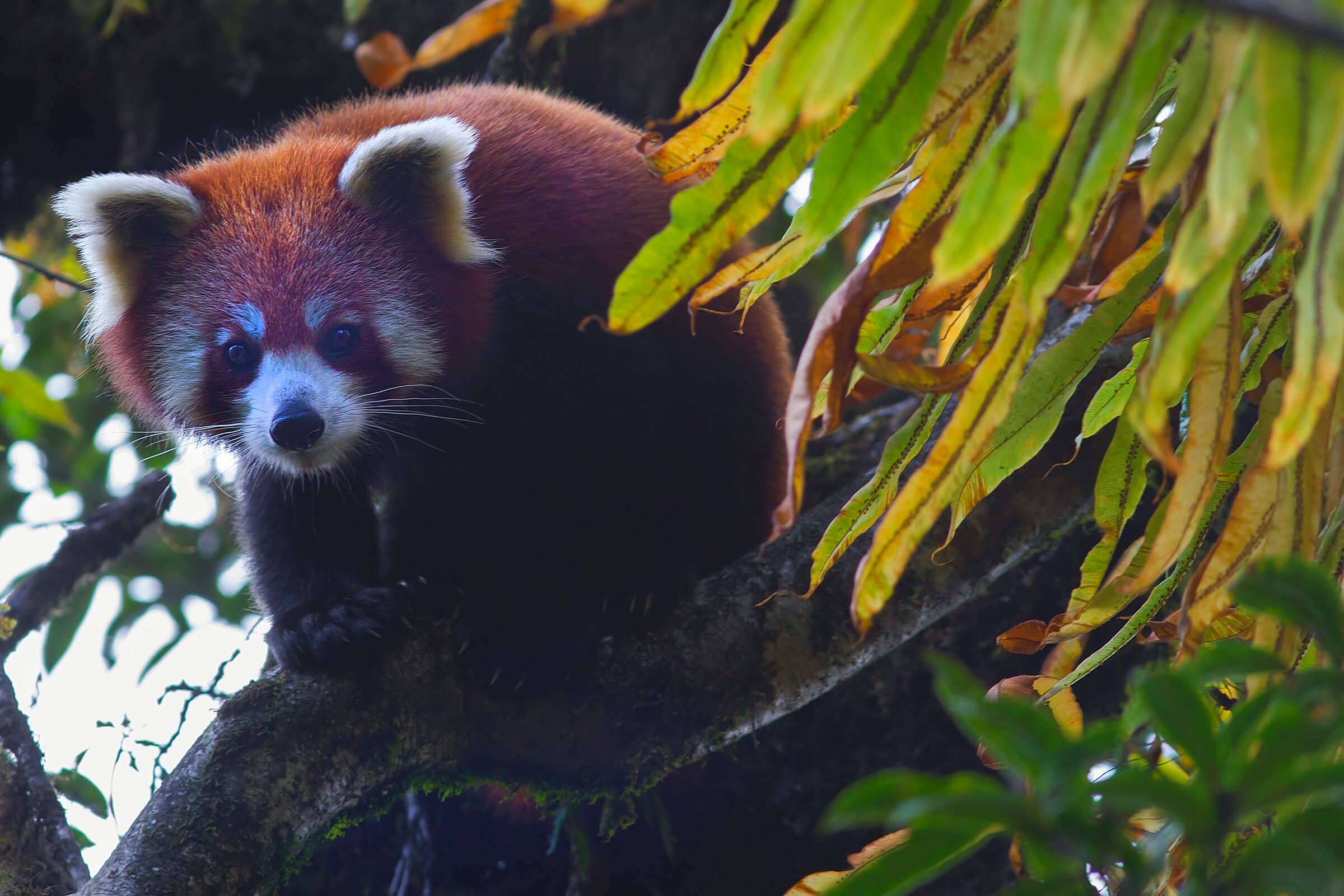
I want to visit Habre's Nest
At the time of publishing this story, COVID-19 cases globally continue to rise, and international travel — even domestic travel in some cases — has been restricted for public health reasons. During this time, consider exploring the world differently: discover new ways you can support communities in your favourite destinations, and bookmark them for future trips when borders reopen.
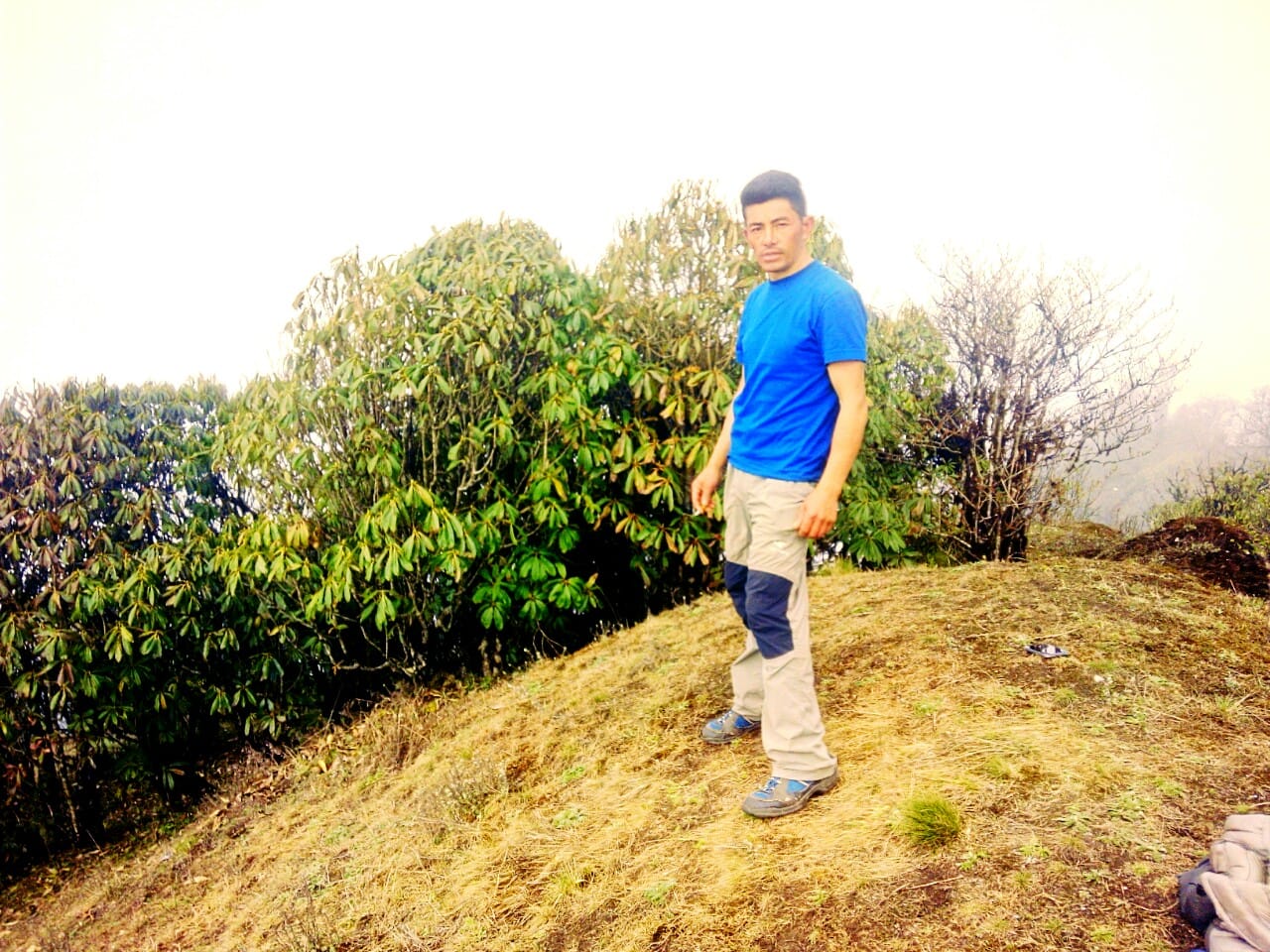
Mohan is a tracker at Habre's Nest, a wildlife travel enterprise on a mission to protect the red panda.
“I am from Maneybhanjang and have been associated with Shantanu and Habre’s Nest from the beginning. I’ve been a part of this initiative from when we were building this homestay ground up in 2016. Today, as a tracker who supports conservation, I earn enough to support my family.
Before, I didn’t understand anything or know enough about the red panda, even though I, like many others, would see them. Now, I understand the need for conservation and the value it adds to the biodiversity here. I understand better some of the behaviour of the red panda from having been able to observe it in its natural habitat.
Until a few years ago, the means for livelihood within and around these villages here were threadbare so some people would set traps and poach red pandas to sell the fur on the black market or sell the animal itself as a pet.
Today things are a lot different. There are laws prohibiting and penalising poaching. But there’s awareness and a change in behaviour too. Employment opportunities exist, thanks to the booming tourism.
As trackers, we do our bit to sensitise villagers every day. After all, it’s because of the red panda and these sensitisation trainings that Kaiakata has gotten visibility on the map and sees tourists from all over the globe.
Quite naturally, it has also brought competition and envy from peers within the tourism sector here. There have been instances when rumours are spread and Habre’s Nest gets wrongly accused, including that we keep red pandas inside the property. which is obviously ridiculous. Some things will need more time to change, I guess.”
Read about Habre's Nest here.
Photo courtesy of Shantanu Prasad
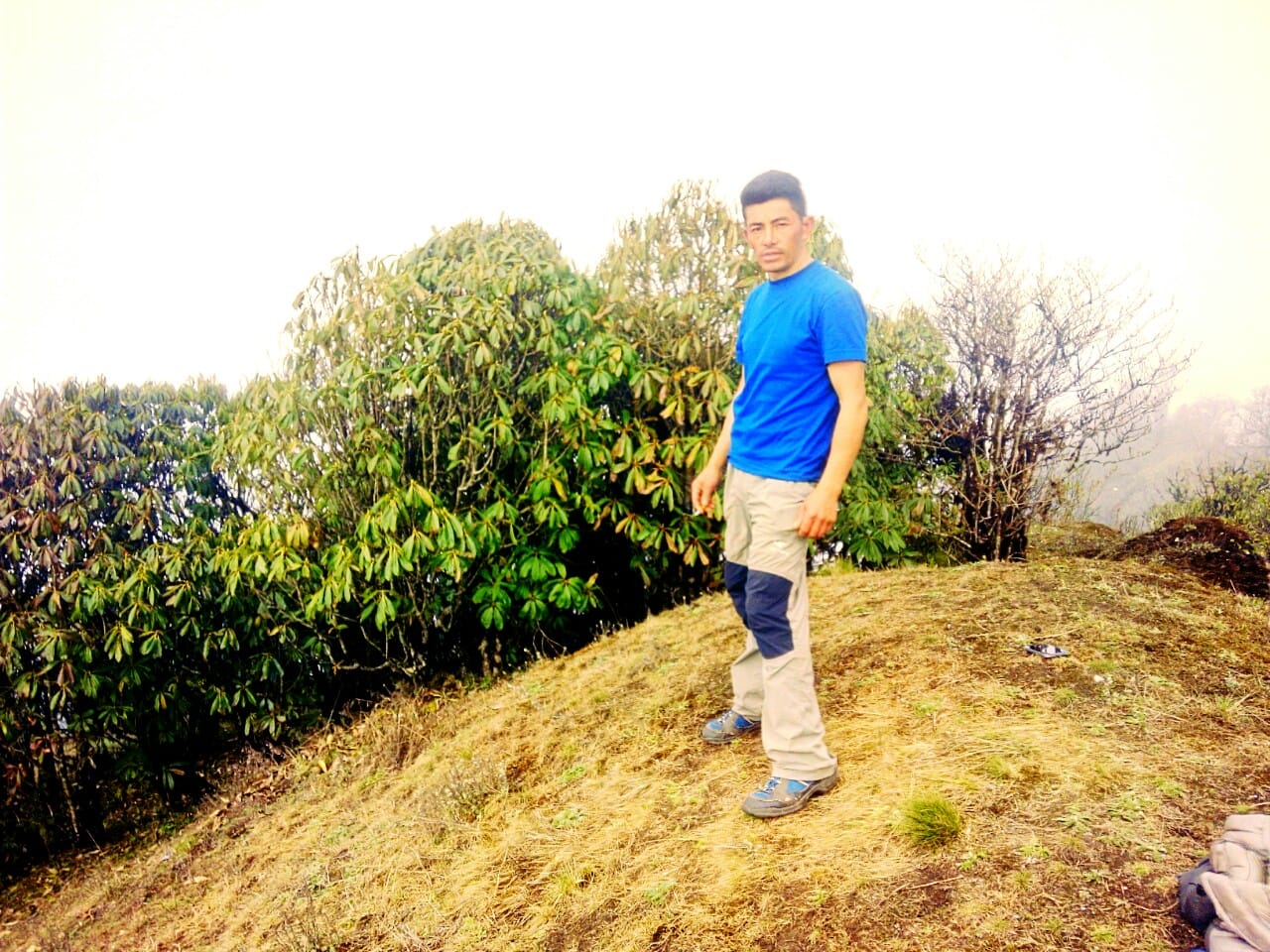
Enquire
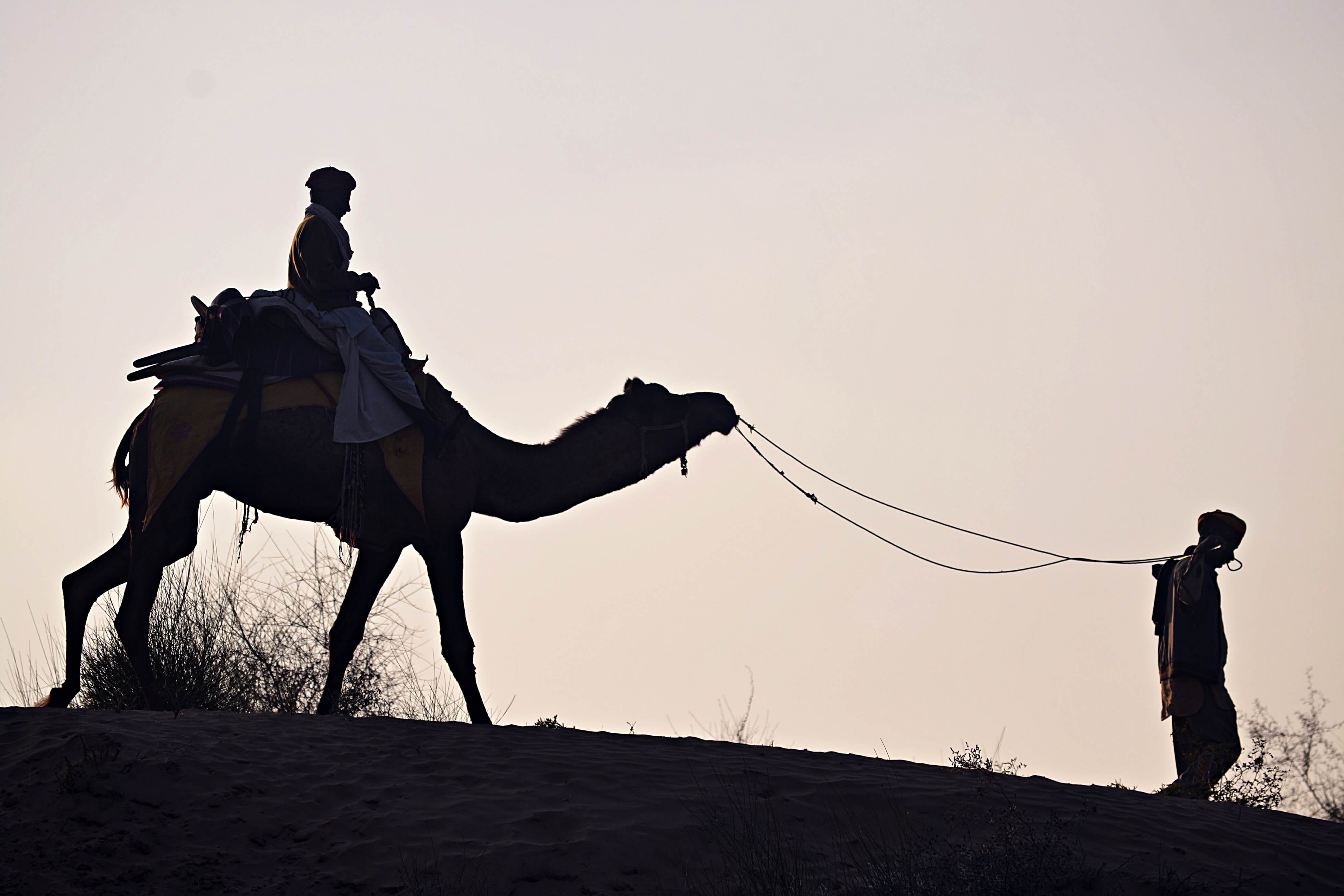
The sprawling Thar is home to diverse wildlife — and a friendly sustainable tourism community. Discover a desert that's anything but desolate.
‘A LIVING DESERT’
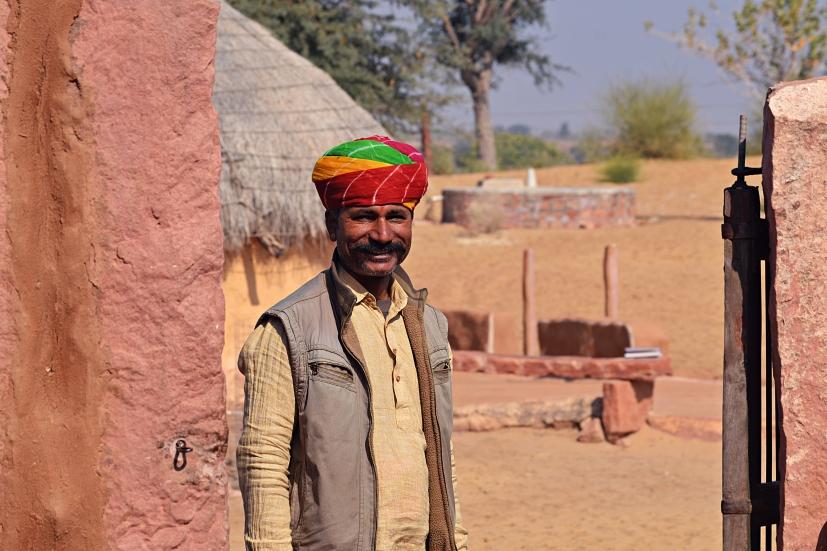
“Ours is a village of about 30 families. Our houses will look alike to you. We make them from local vegetation,” our guide told us.
Vegetation? We were in the desert. Everywhere around me was thorny leafless shrubs and needle-leaf trees, and I found myself wondering how anything could be made from them.
I grew up thinking that deserts are incapable of sustaining life. To my “imaginative” traveller brain, deserts were about vast dunes that make for postcard-perfect photos, at best.
In Thar, a desert in the northwestern state of Rajasthan that covers 10 per cent of India, I was soundly proven wrong.
My host Gemar Singh, or Gemar ji as we called him, loves to emphasise that the Thar, the 17th largest desert in the world, is a “living desert”. The chinkara (an Indian gazelle), the nilgai (sometimes called the blue bull) and the grey shrike (a type of songbird) are among the wildlife one can spot amid a landscape of roheda ( a type of desert teak) and tart ker berries.
The desert is also home to communities of camel herders by descent and tradition, who can even track lost camels based on their hoof prints. These communities have carved out a life in the sand, such as by using easy-to-ignore vegetation that can be used to construct homes, or have medicinal value.
And on the fringe of the Thar, you will find Hacra Dhani, an eco-friendly travel enterprise founded by Gemar ji.
THE SIMPLE LIFE
While desert tourism has taken off in Rajasthan, particularly around the city of Jaisalmer, few make their way to Osian (sometimes spelt Osiyan), an oasis town 85km away from the famed blue city of Jodhpur.
Just outside of Osian, Gemar ji (ji is a Hindi honorific) has created a base for intrepid travellers to experience the desert lifestyle in an authentic and sustainable way.
Hacra’s Jhumpa guest huts are built traditional desert-style, using mud and sandstone slabs and topped with a thatched roof. There is no electricity, running water, or en-suite bathrooms. Guests are provided with solar lamps in the evenings. Guests can also opt for overnight desert camping.
Not feeling quite so adventurous? Hacra can arrange for glamping stays with spacious bedrooms and en-suite bathrooms.
During your stay, you can go on safaris and camel rides to spot wildlife. But Hacra is less about packing in a list of must-dos, and more about a chance to wind down and catch your breath, especially if you have been travelling around the country.
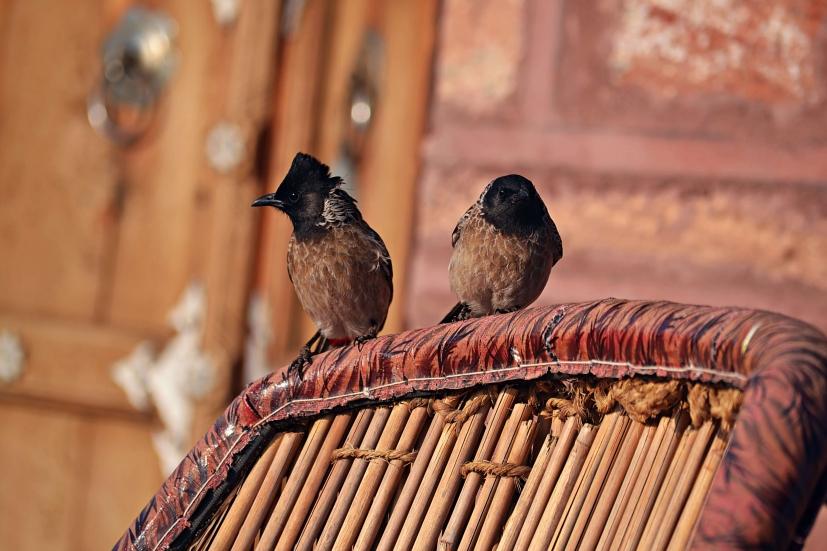
It is also an opportunity to get to learn about desert life. The community walk organised by Hacra is an insight into the lives of rural Rajasthani communities, which includes the Rajputs and the Bishnois — the latter being an indigenous community and sect under Hinduism, known for being fierce protectors of nature.
Walking in the village, you will see how three generations of a family live together, and how some of them have built a separate room for guests. Most have an in-house granary to store millets and pulse which they cultivate themselves, and an area for livestock, reflecting the importance of subsistence farming to the community.
You also see the houses that inspired Hacra’s jhumpa huts and how they are naturally eco-friendly — the mud walls keep the indoors cool during the harsh scorching summers of Rajasthan and warm during winters, reducing the reliance on cooling and heating systems.
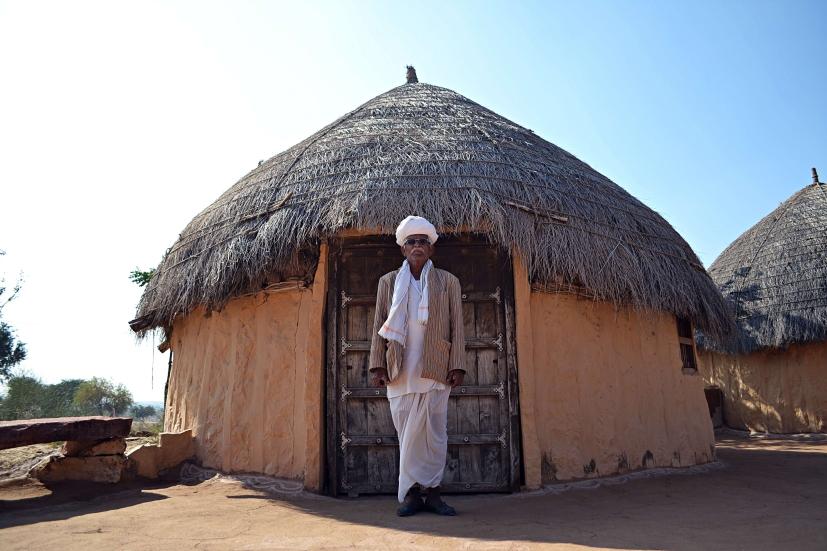
Babulal ji — a 70-year old jovial gentleman from the Bishnoi community (pictured above) — is also a guide with Hacra. Dressed in his traditional all-white attire, he regaled us with tales, including that of his travels to Libya in the early 1980s.
When quizzed about what changes he has seen within his community over the years, Babulal ji affirmed that life is not as harsh as it used to be. Cultural norms are relatively relaxed and survival of livestock is no longer a matter of life and death, thanks to improved infrastructure and the introduction of farming techniques that allow for more types of crops to be planted.
AGAINST ALL ODDS
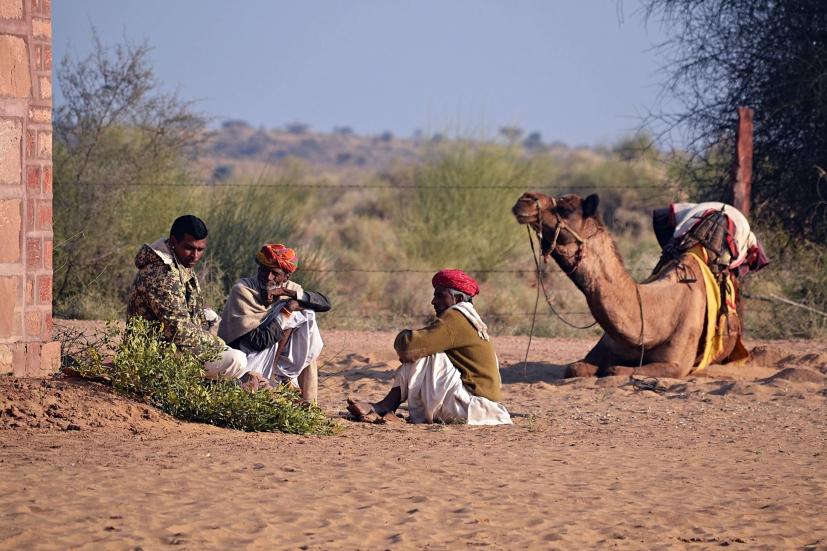
From one man’s vision, Hacra is now a team of four guides, several camel breeder-herders, as well as kitchen and housekeeping staff.
“When I decided to start this eco-stay, our village had neither roads nor electricity,” recalls Gemar ji. “I would travel to and from Jodhpur just to be able to access the internet. It was only much later that I bought a secondhand laptop from a Swiss traveller who had become a friend on their third visit here, and installed a solar panel to power it.”
Initially, Gemar ji conceived of Hacra to create viable income for the desert communities, but as travellers began trickling in, so did new ideas.
He learnt about the world of responsible travel from a traveller from Europe, who had asked about Hacra’s practices. “Tourists have come and shared their perspectives as well as questions, which I have channelled back into making the enterprise more relevant to its times.
“I simply knew I wanted to stay local and keep the operations local. I learnt about responsible travel only in 2007 — and have continued to keep myself up to date to the best of my ability.”
To stay true to its local flavour, Gemar ji has had to engage with the local community to put to rest their fears of their houses and lands being snatched away by outsiders masquerading as tourists. This extends to the rest of the Hacra team, who share with the villagers their interactions with tourists.
And over time, the Hacra team have also become more comfortable in requesting that guests respect local traditions and lifestyles, and adapt to Hacra’s practices.
“We realise now the importance of stating to them what the local context is and what they would also be required to comply with when they are here – such as the culture, their clothing, the food, the overall ambience,” says Gemar ji. Respecting the places one travels to, he adds, is part of being a traveller.
At the end of my two-day trip, I left very much humbled by what the desert ecosystem has to offer. Life abounds here, and if Gemar ji and his team have it their way, it will continue to thrive, regardless of what modern life brings.
Hacra Dhani is a community-based responsible travel initiative, started and managed by a self-taught local with a small team.
Your experience at this “living desert” ensures that every penny spent goes directly to the locals whose livelihood is being supported by Hacra (like the camel herders) or who now have an alternative source of seasonal income (like the guides and kitchen help)
The stay arrangement at a minimalist-yet-comfortable jhumpa (mud huts) with meals cooked from locally-produced-and-sourced ingredients ensures a low carbon footprint.
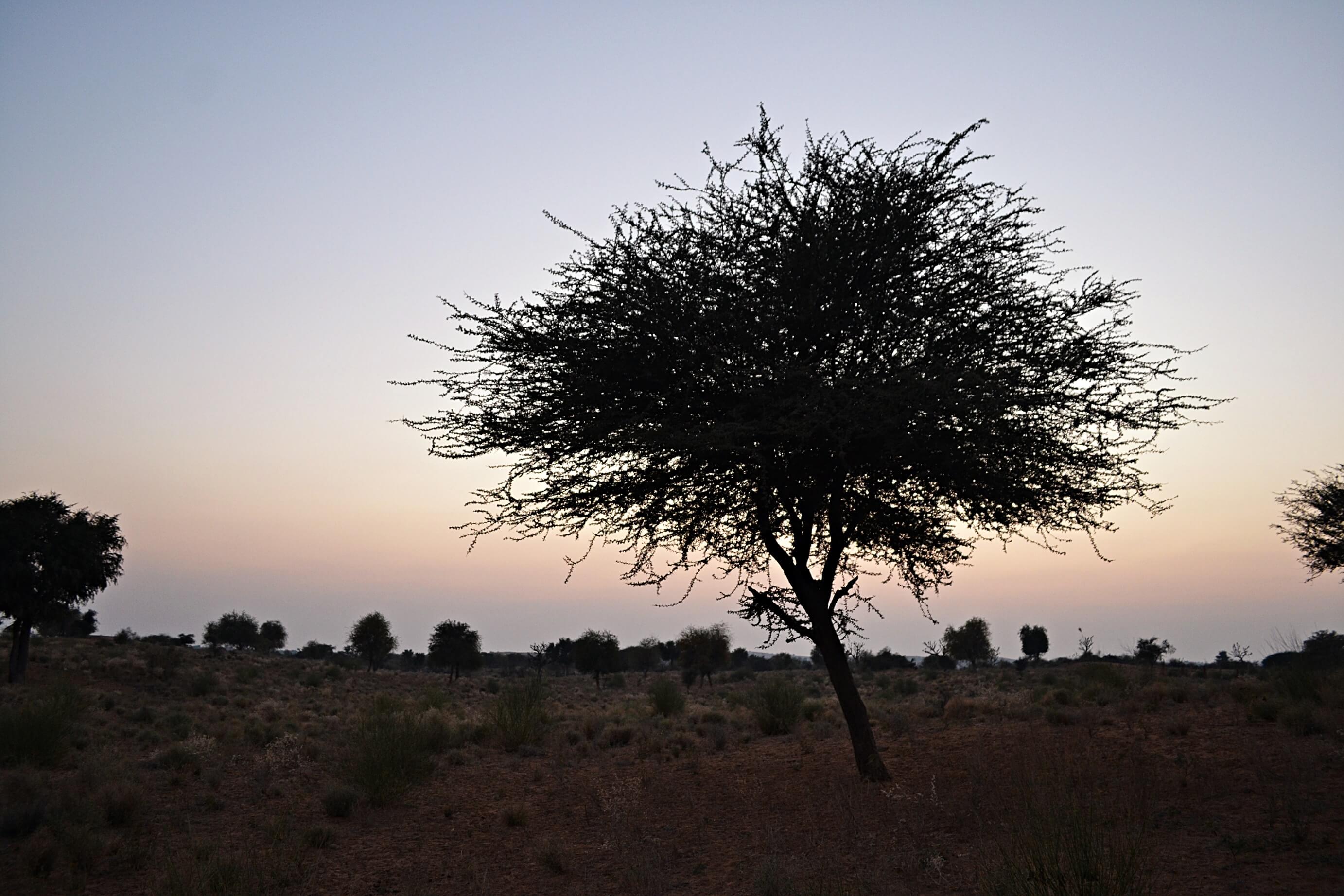
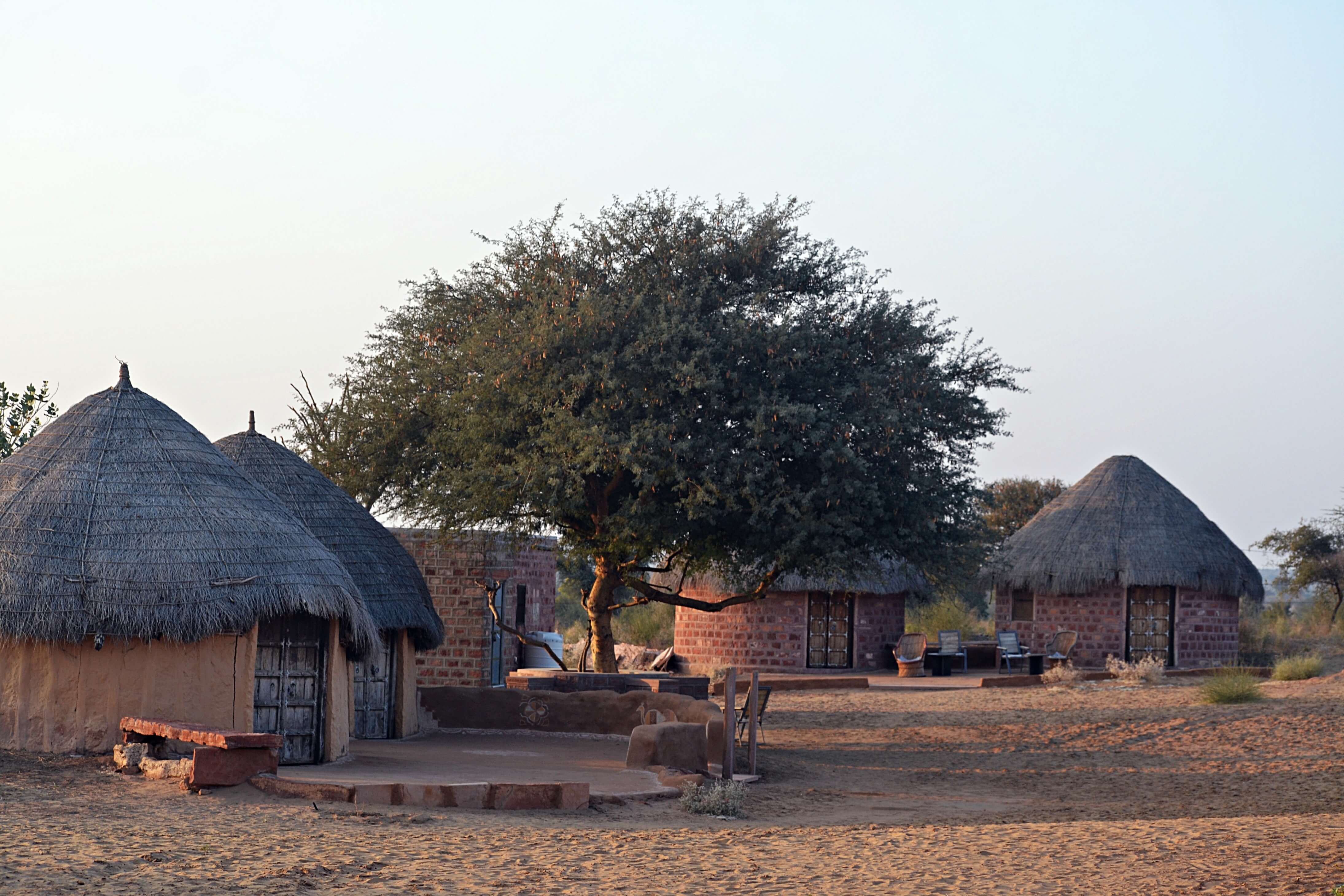
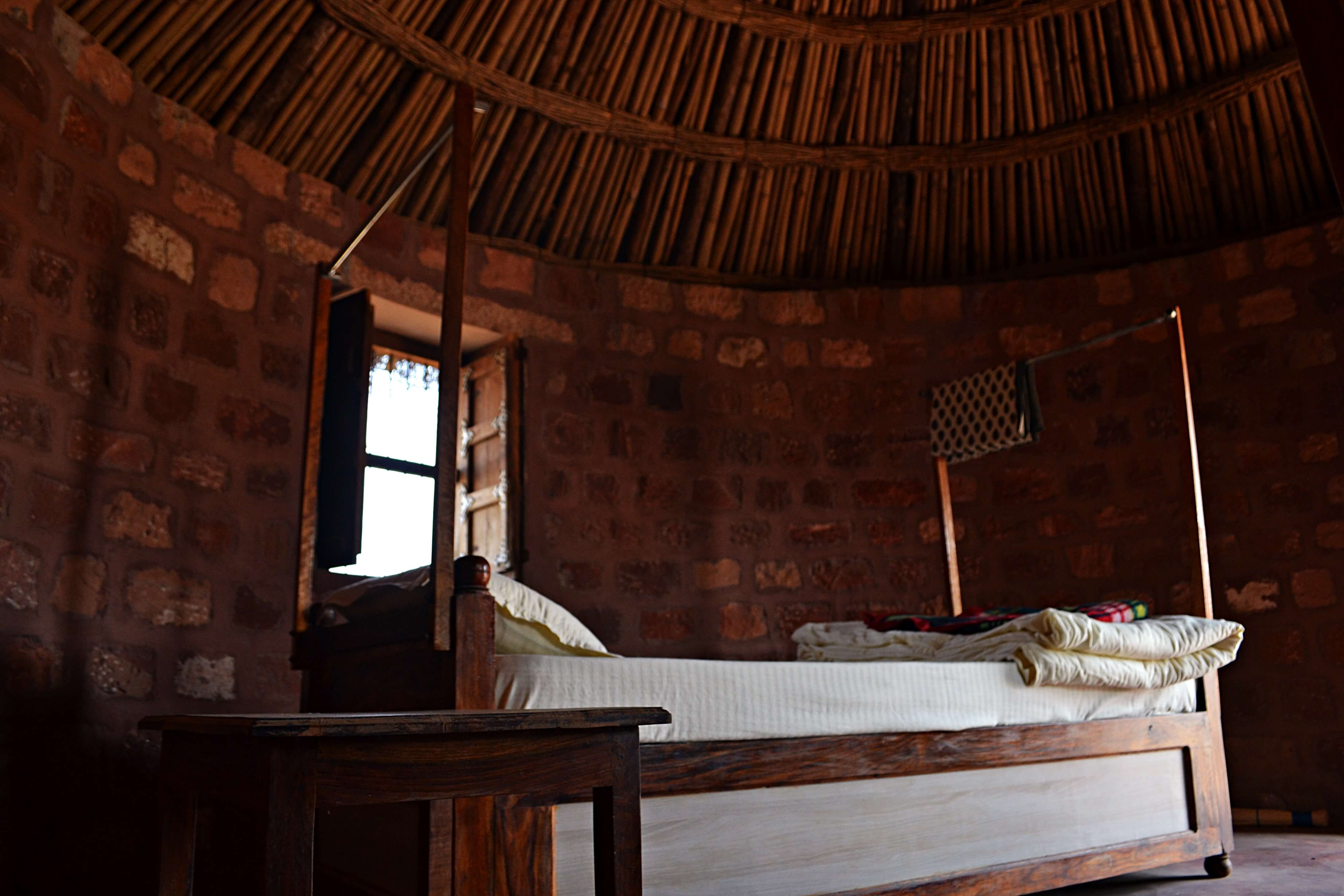
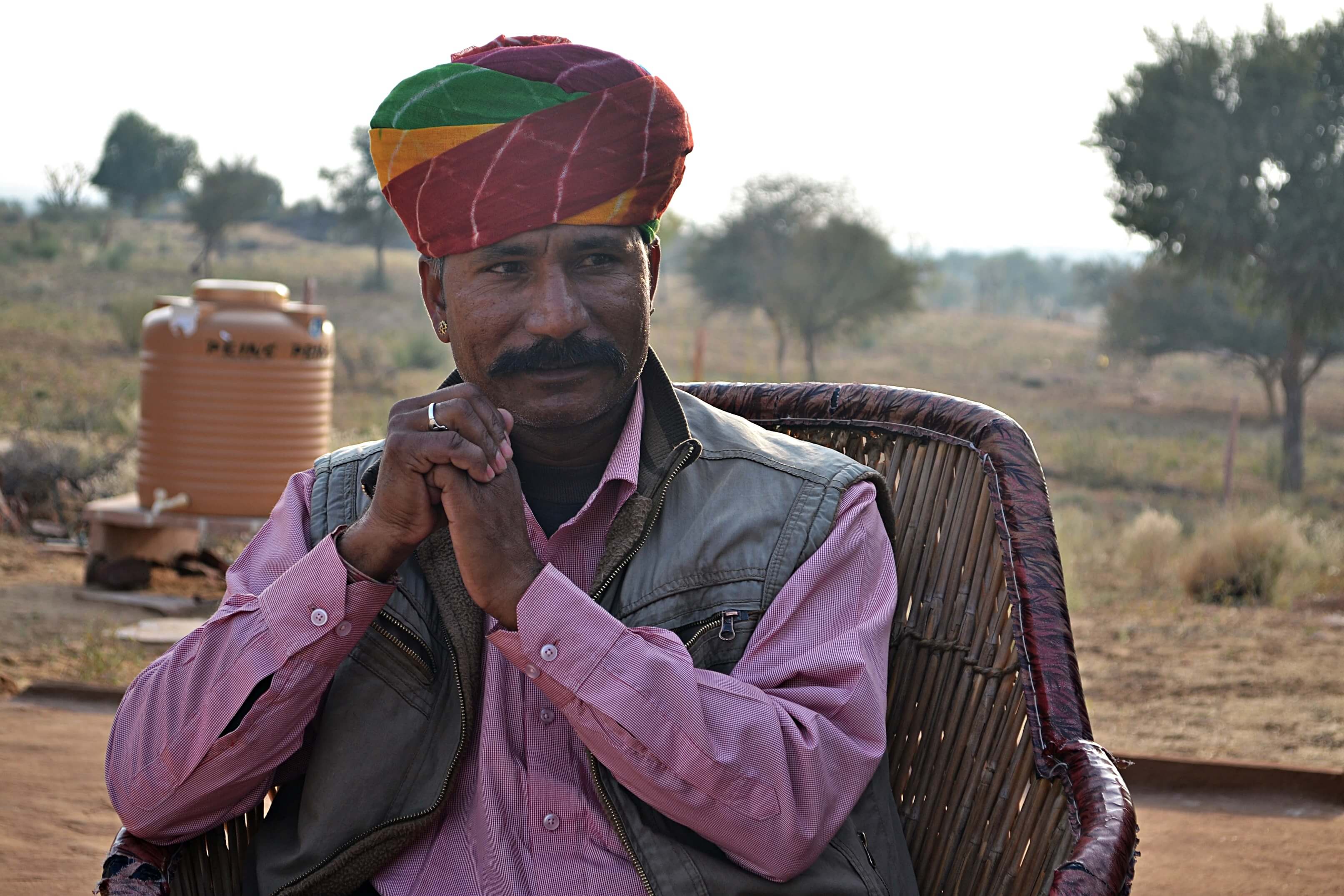
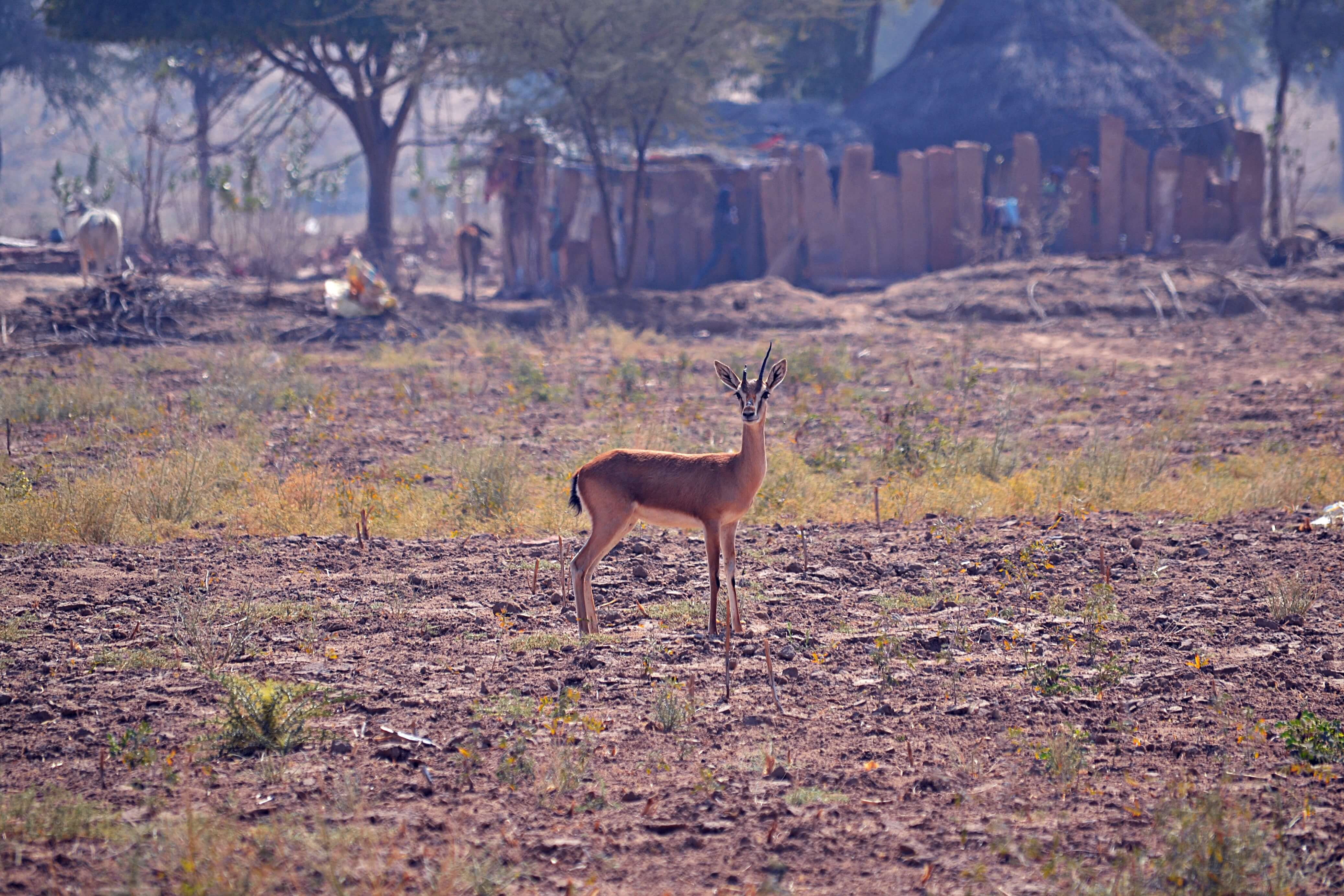
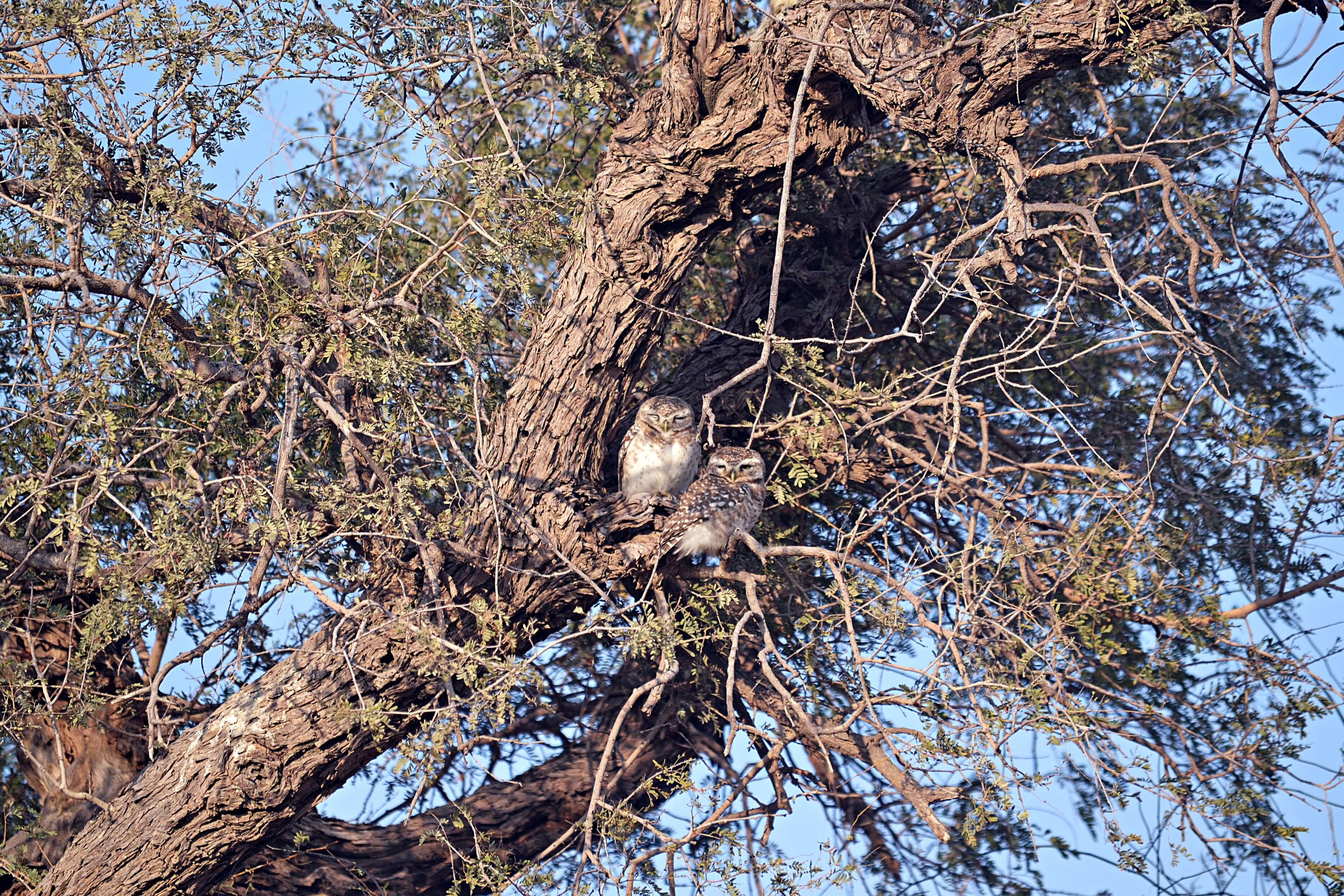
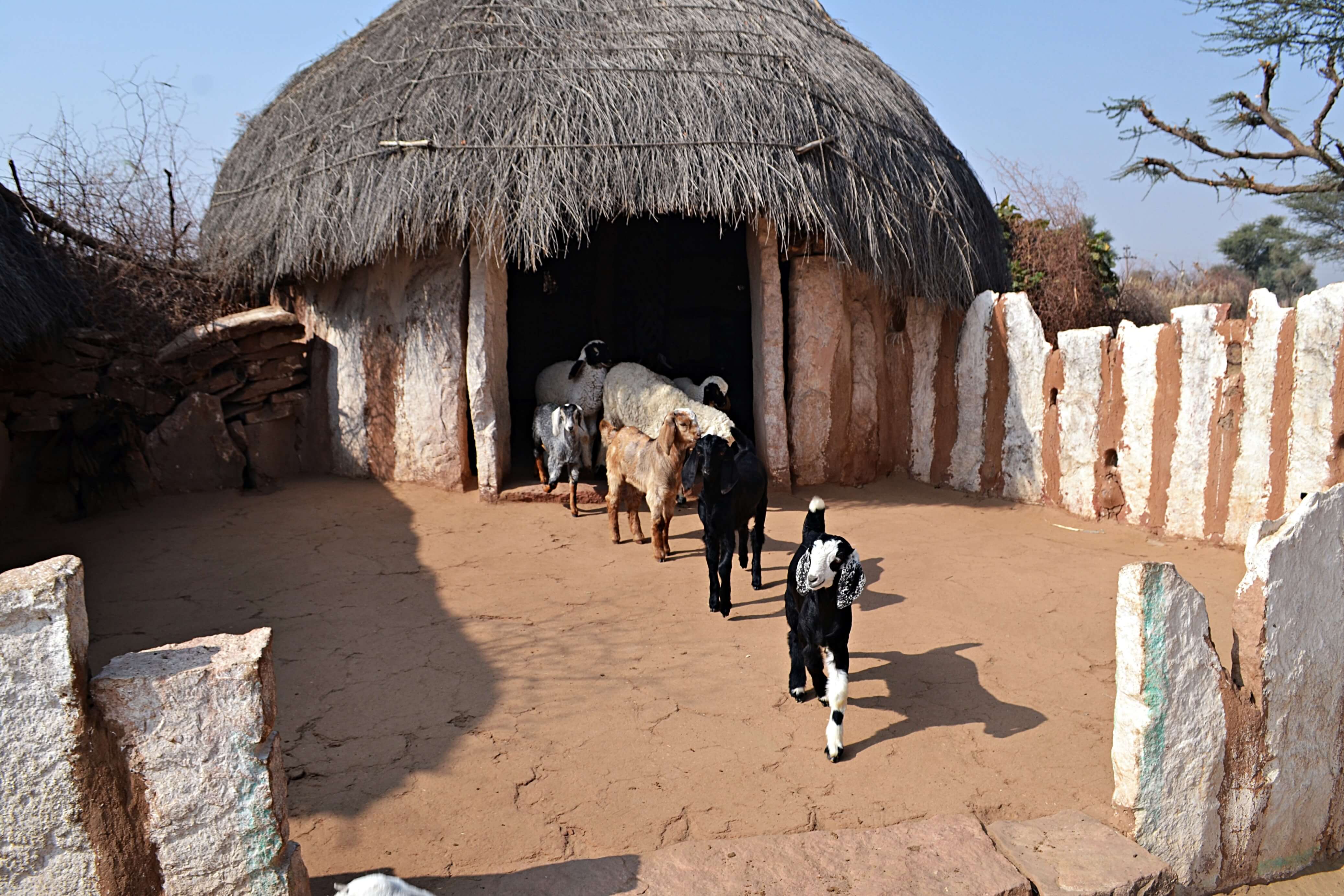
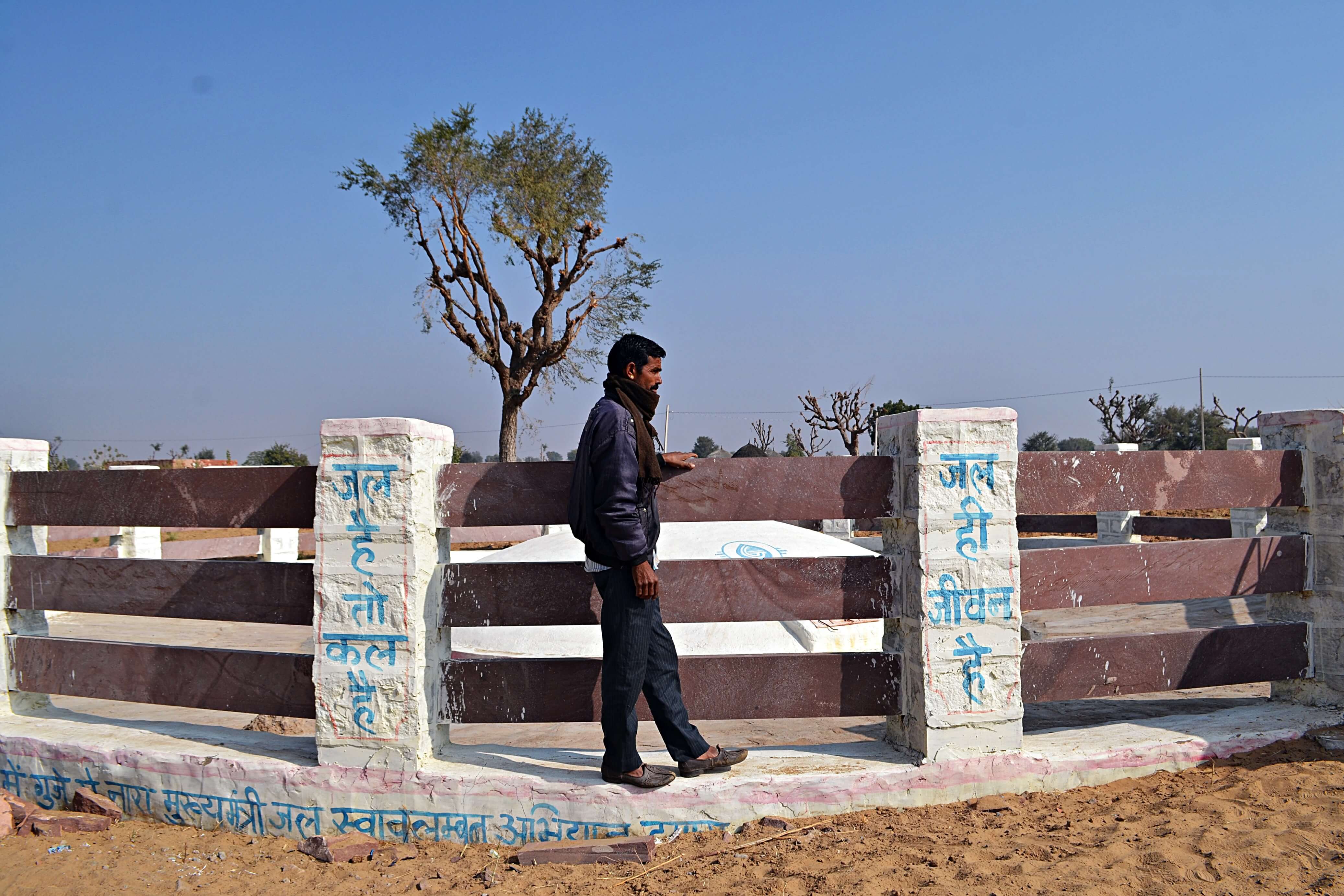

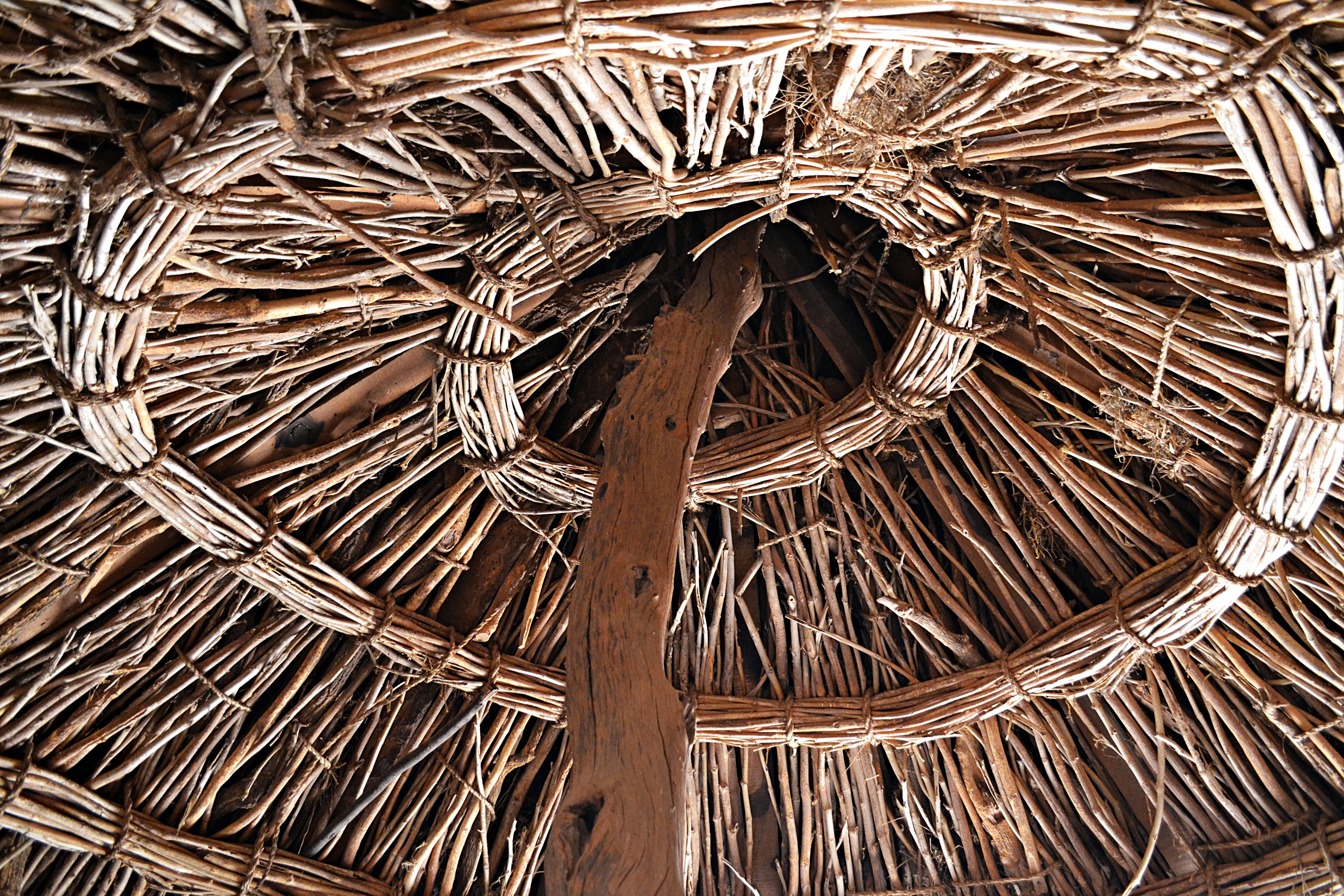

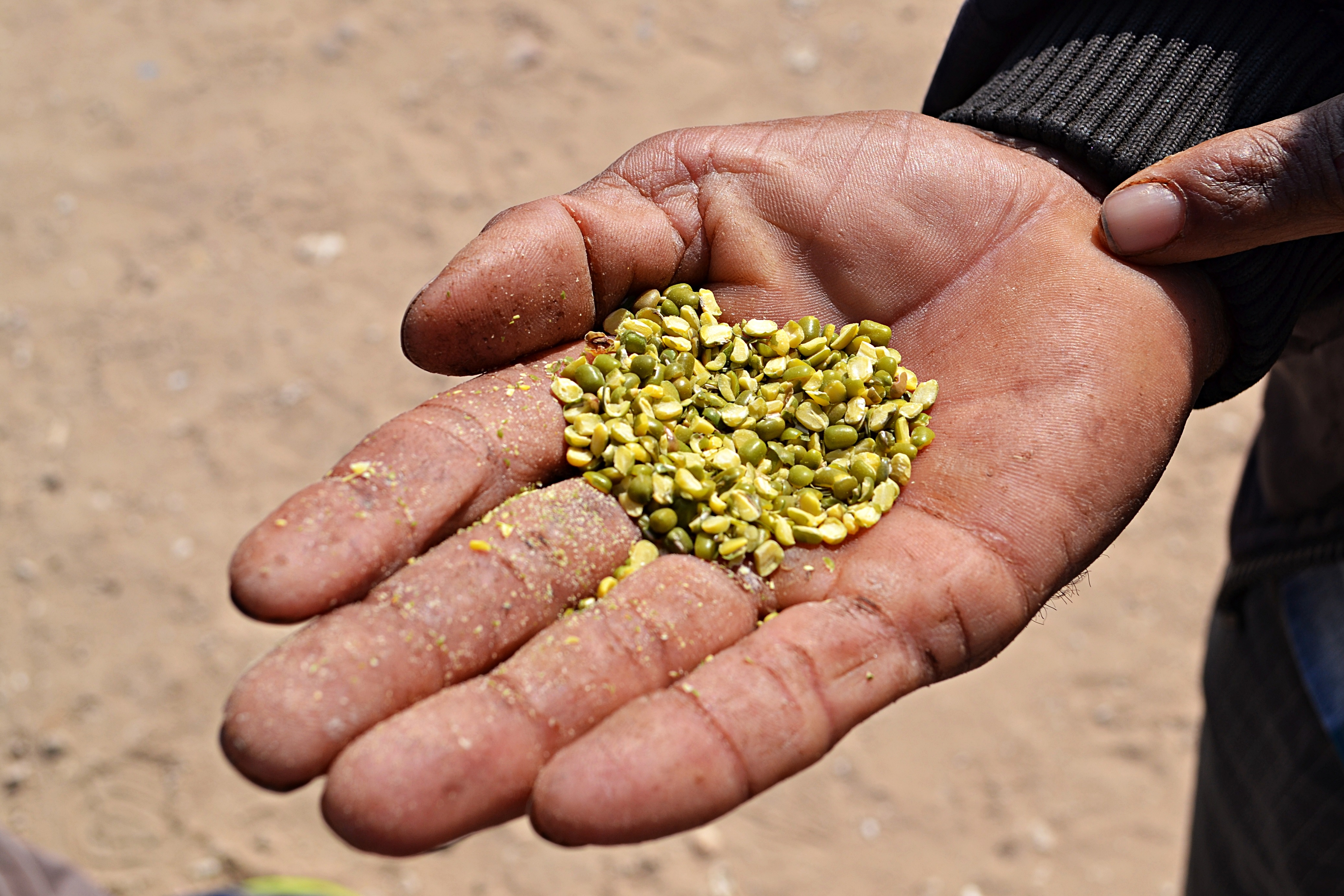
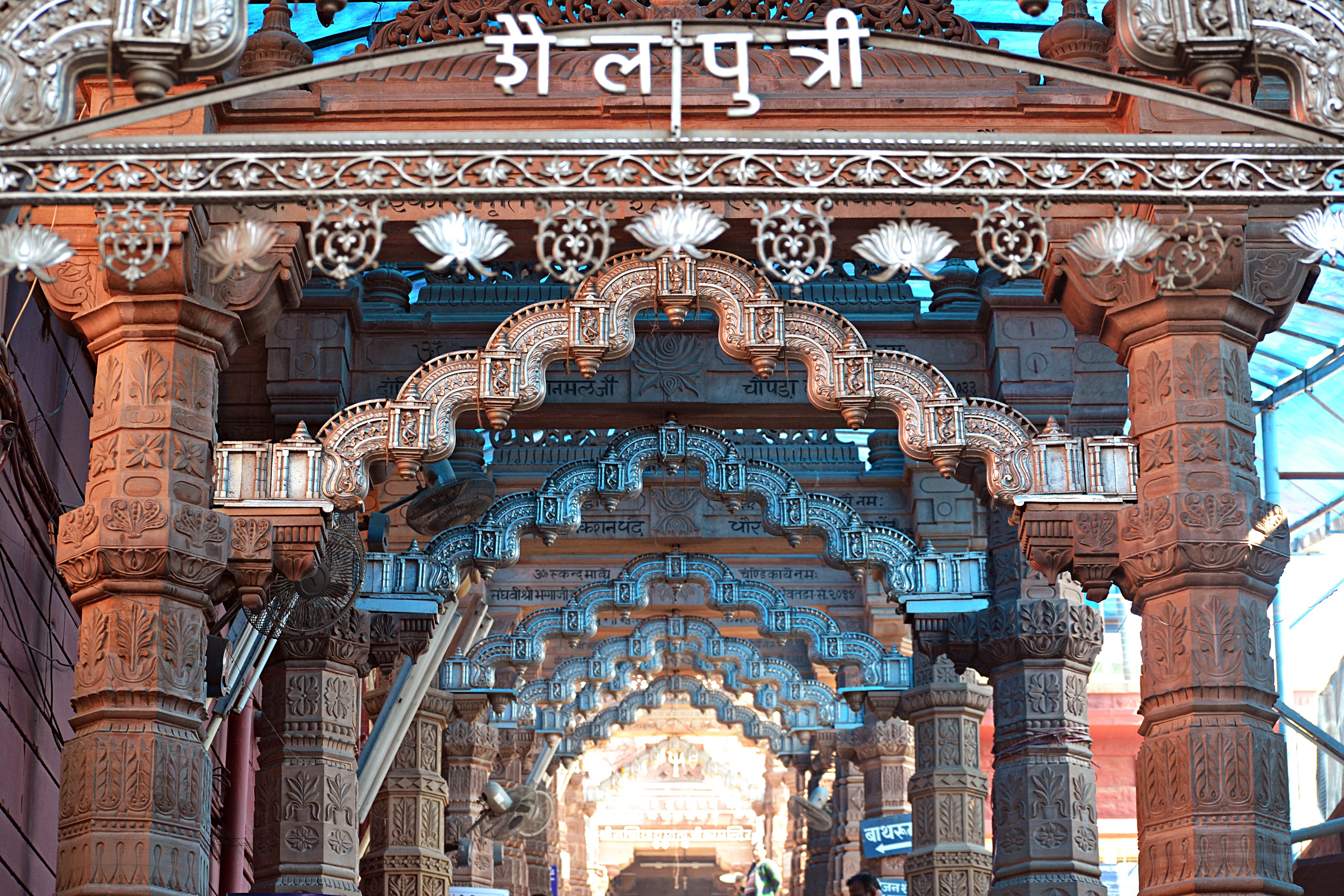
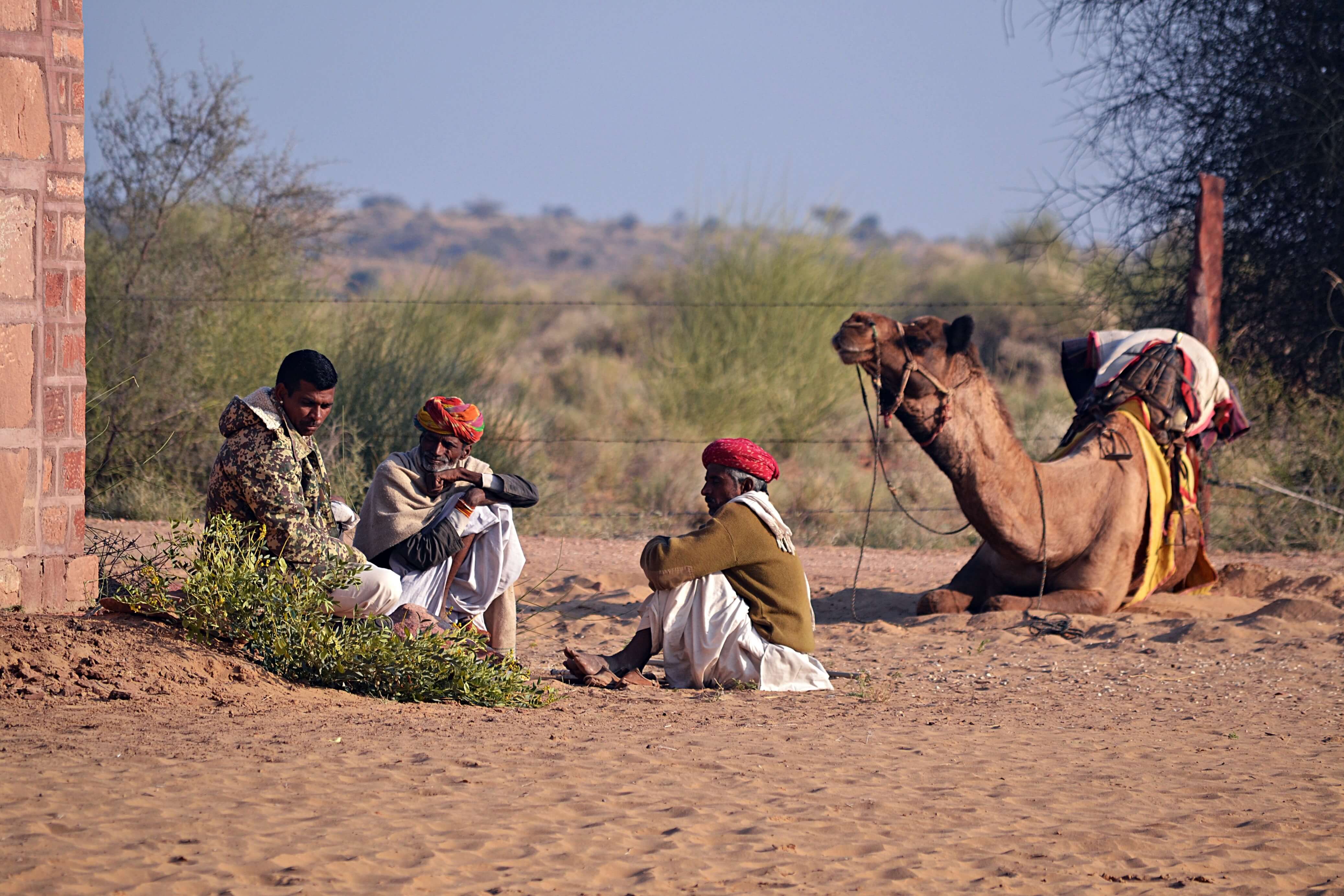
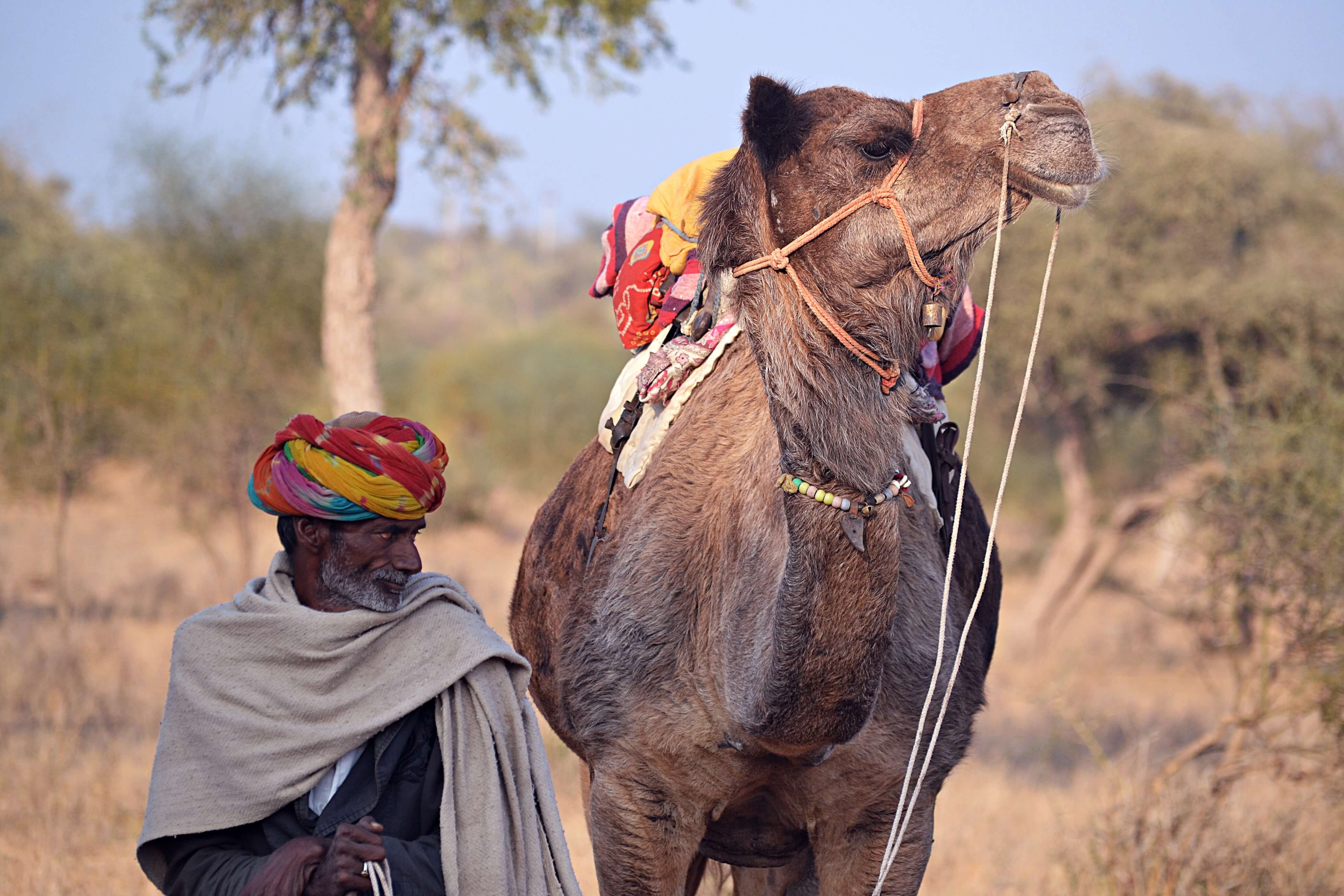
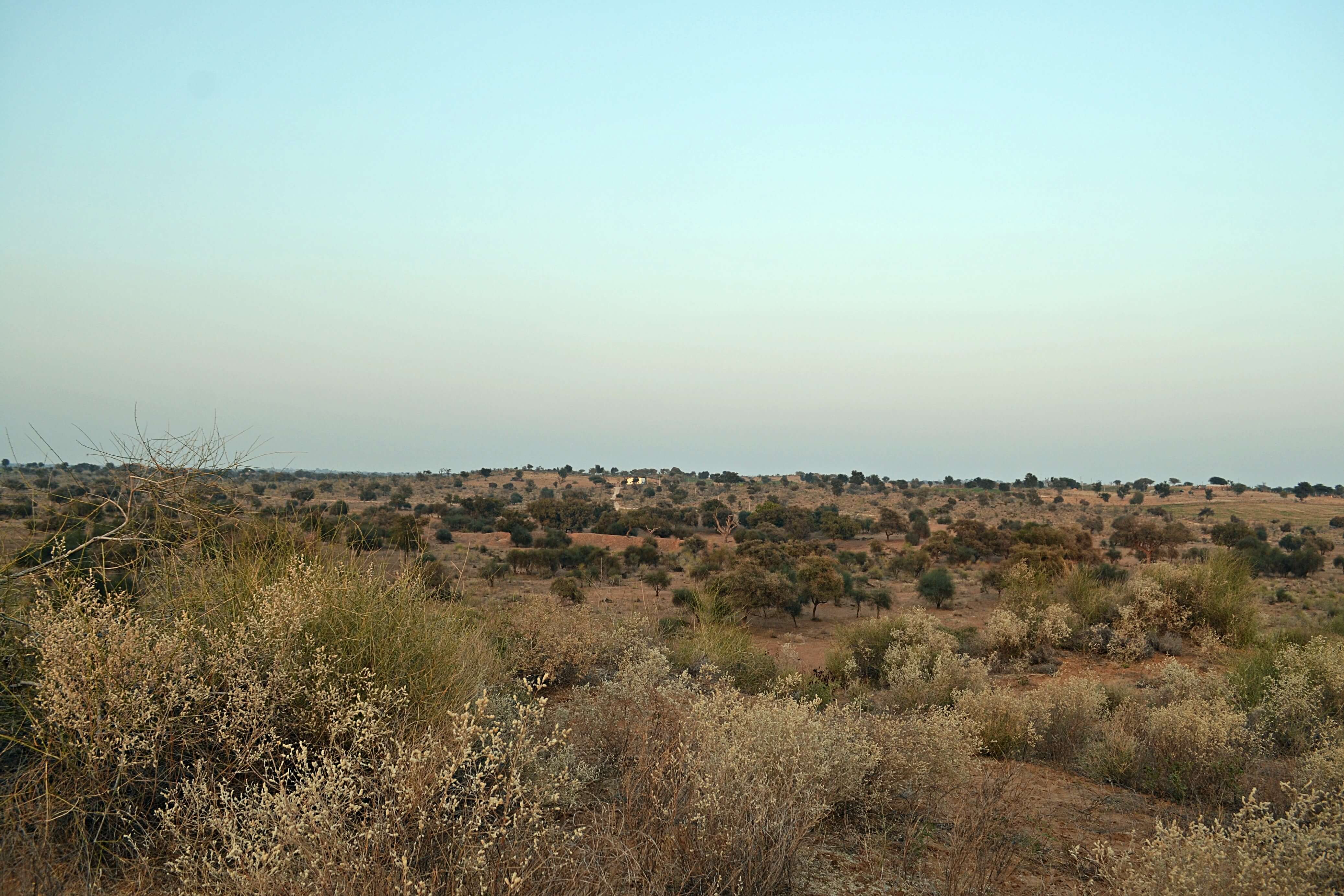
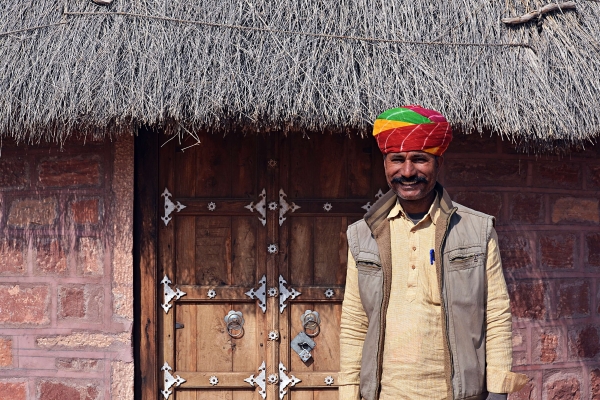
Hacra Dhani is a local-owned desert travel social enterprise in a rural corner of Rajasthan specialising in authentic and sustainable experiences guided by the local community.
“From my student days in Jodhpur city, I have felt a pull towards tourism. I would interact with tourists even back then, recommend local spots for them to go to and sometimes even accompany them like I did when I travelled to Delhi and then onwards to Himachal Pradesh with a French tourist.
But I knew that I wanted to do something here in my village. I knew nothing about rural tourism or responsible travel back then. All I knew was that I wanted to bring tourists here to experience a ‘living desert’ because the popular misconception is that a desert is just barren land where nothing grows or survives.
When I began setting Hacra up, there were no roads nor electricity here – let alone internet connectivity. I used to make trips to Jodhpur and spend some time at Internet cafes to reach out and respond to any queries about us. Later, I bought a second-hand laptop and set up a solar based internet router so I wouldn’t have to keep travelling to Jodhpur city.
It was a struggle getting guests initially. But I’ve been persistent and I’ve learnt by doing. I also built a team so that I had some support and could offer others from the village to also earn some additional income during the season.
Today there are four guides, eight camel breeders/herders, and a group of women who assist with housekeeping and kitchen-work that comprise of the team at Hacra. These mud house rooms (dhanis) have been collaboratively constructed with the help of others from the village community.
Today we acknowledge our role and responsibility in informing the tourist beforehand what to expect from a stay at a living desert. We realise now the importance of stating to them what the local context is and what they would also be required to comply with when they are here – such as the culture, their clothing, the food, the overall ambience. We are a lot more assertive and comfortable with declining a guest’s request if it isn’t in alignment with our ethics.”
Read more about Hacra Dhani here
Meet Gajje of Hacra Dhani
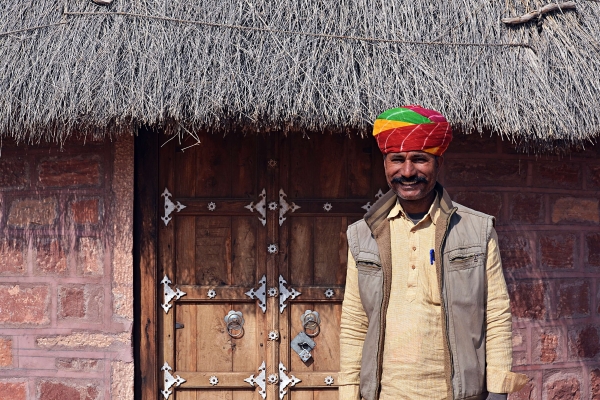
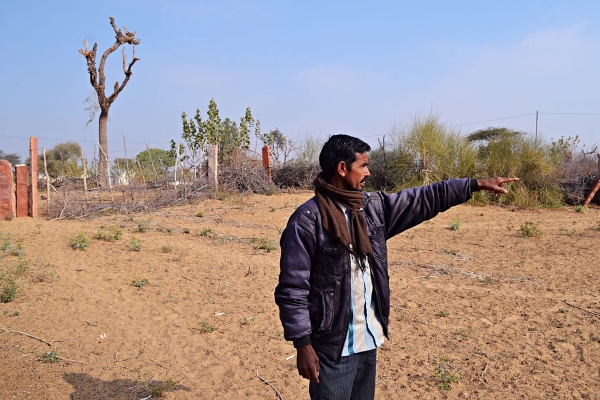
Hacra Dhani is a local-owned desert travel social enterprise in a rural corner of Rajasthan specialising in authentic and sustainable experiences guided by the local community.
“I have known Gemar ji for more than 10 years now. So, when he had first mentioned to me this opportunity to be a guide, I was intrigued.
I live with my family which comprises my father, my brothers and their families. We are farmers and though this land looks arid to an outsider, we cultivate crops that are not water intensive. We have however recently invested in a borewell that allows us access to a more regular supply of water. We are primarily dependent on our farmlands. We cultivate to consume and occasionally sell our produce in the market.
That’s why this opportunity to become a local guide was of interest to me. It is because of this role that I have learnt English. I am now a lot more at ease and conversant with tourists and sharing with them the ways of our life here in the desert.
In some ways, being a guide also makes me want to be more in tune and alert about the on-goings within my village. It gives me an additional sense of purpose.
And the extra income, though seasonal, helps. I still continue to work with my family on our farm and tend to the goats on the days I take tourists around for the village walk. It means beginning my day a little earlier than otherwise but that’s okay.”
Read more about Hacra Dhani here
Meet Gemar of Hacra Dhani
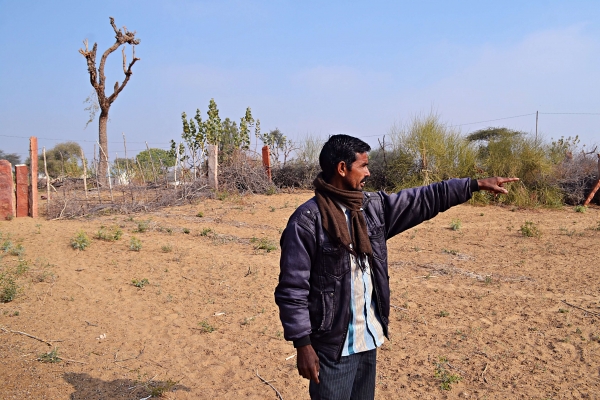
Visit Mangalajodi Ecotourism Trust
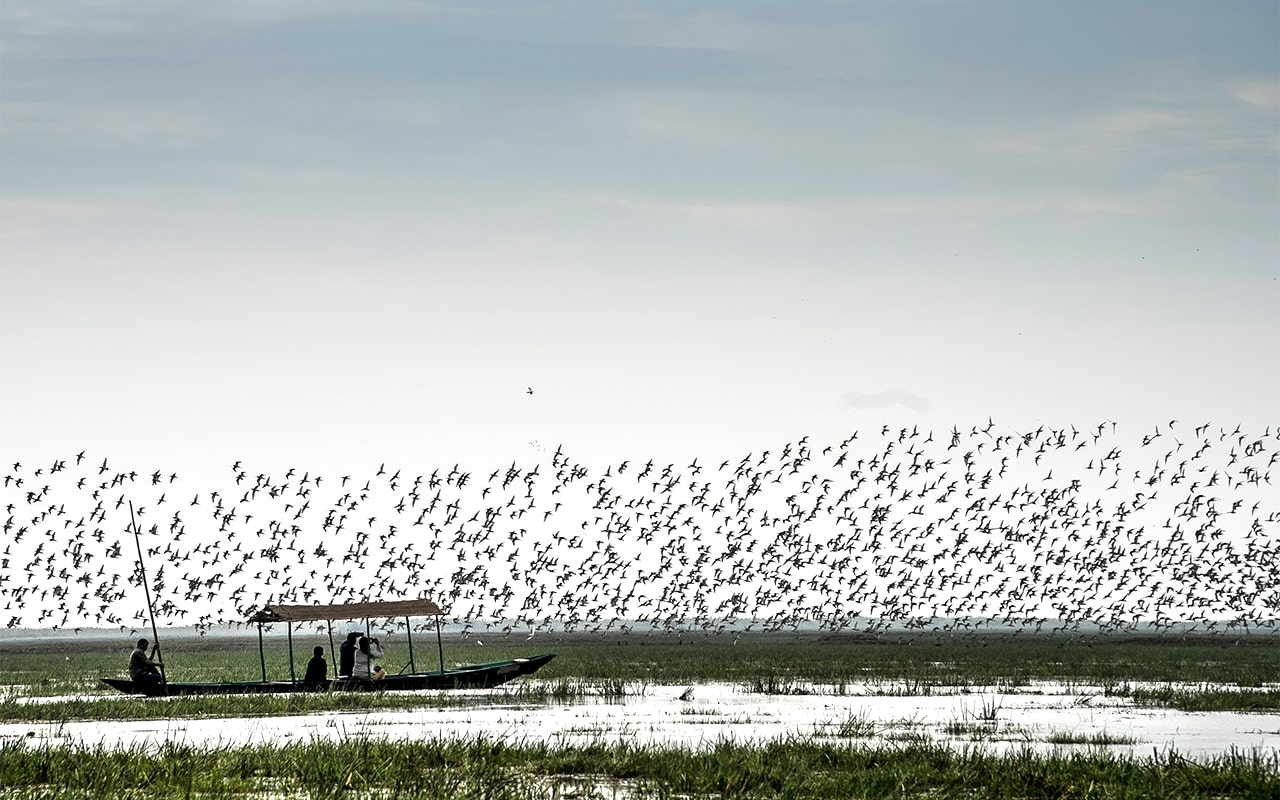
After years of poaching, it didn’t look good for the birds in Mangalajodi. Then locals, realising the harm of their actions, reversed course. Let Mangalajodi Ecotourism Trust show you how they brought the birds back to this wetlands paradise — and travellers with them.
Meet Subhash

“When we didn’t know better, we’d kill and eat bird meat. On some occasions, we sold it to earn some money,” says Subhash Behera, a fisherman.
Two decades earlier, sentiments like Subhash’s were not unusual. Thanks to poaching, Mangalajodi’s bird population had dwindled to 5,000.
But today, Mangalajodi is a village transformed. Locals proudly show off the rich biodiversity of the area, and virtually all of them can rattle off the names of every bird species there in English, despite the language being foreign to them.
And every year, from October to March, the sleepy village is transformed by a flurry of activity.
Coming from as far as Siberia and Mongolia, migratory birds make Mangalajodi’s Chilika Lake — the second largest coastal lagoon in the world — their temporary haven. In turn, they draw flocks of passionate bird-watchers.
Hitting bottom, rising up

Mangalajodi, located in the state of Odisha, entered the spotlight in the 1990s when environmentalists began sounding the alarm over the plummeting native and migratory bird population numbers.
Then, fishermen like Subhash thought nothing of eating the various birds that had somehow gotten entangled in their nets. Others poached the birds, in the hopes of selling them for money.
A solution was desperately needed, and it wasn’t long before eco-tourism emerged as the prime candidate: perched on the edge of the serene Chilika Lake and its vast wetlands of swaying reeds, Mangalajodi is perfectly situated as a base for bird-lovers.
Thus, Mangalajodi Ecotourism Trust (MET) was established in 2010, uniting various ongoing efforts in the area into a community-managed and community-owned enterprise.
Guided by RBS Foundation India and its implementing partner Indian Grameen Services (IGS), MET succeeded by placing locals like Subhash at the front and centre of its efforts.
“The phenomenal knowledge of birdlife that the community had, was seen as a skill that an enterprise could use,” says Abhinav Sen from RBS Foundation, who helps manage the programme with the villagers.
Interested members of the fishing community have been trained as boatmen — including Subhash — while former poachers who once used their keen eyes and ears to hunt for the birds, now use them to complement their new roles as guides.
All bookings are made through the Trust and every member is paid their fee on a per diem basis, depending on the type of services delivered (e.g. Rs300 per boat ride).
The Trust runs also four earth-friendly cottages and one dormitory for large groups, and can accommodate up to 25 to 30 people at a time. Meals comprise items sourced from local fisherfolk and farmers.
Once down to just a few thousand, today, the bird population has rebounded to 300,000 at its peak.
A day in birder’s paradise

Armed with only oars and binoculars to help them spot as well as identify birds, the boatmen and guides are the eyes and ears of the guests, as they accompany them into the wetlands.
During bird-watching season, a typical day starts with an early morning boat ride where guests spend around two-and-a-half hours on a boat, quietly lapping through the waters to spot birds like glossy ibises, swamphens and godwits.
After breaking for lunch, one can relax for the day, before heading out in the evening to spot more prized birds, while being embraced in a glorious sunset.
“It feels good to have people come visit our village and stay here for a couple of days. It is a matter of pride and honour for us,” says Purna Chandra Behera, a guide.
One of the first to take to guiding, Purna Chandra was sent for training at the Indian Institute of Tourism and Travel Management in Bhubaneshwar, after he joined MET.
He now works as a guide during bird-watching season. “Today, my son, who is also a guide, has attended the same training programme and has been taught by my teacher,” he shares with pride.
Adds Subhash, now a boatman and conservationist: “It’s because of these birds that people from different parts of the country, and even the world, come to stay in our tiny village.
“In turn, this helps us earn a better income for five to six months of the year and take better care of our families.”
Looking at the future
Awarded “Innovation in Tourism Enterprise” at the United Nations World Tourism Organization Awards in Spain in 2018, MET is gaining traction.
Recognition has brought visibility and in turn an increase in not just the number of tourists, but also the number of stakeholders: governmental, corporate and individuals.
Purna Chandra, for example, has been seeing more boatmen ferrying travellers around, although they are not part of the trust.
But as they reap benefits from the tourism boom, MET is also asking itself: how much is too much?
“At an operational level, it means understanding how many boating trips can be offered per day without crowding Chilika and disturbing the birds in their habitat. It also means identifying ways in which we can accommodate tourists,” says Sanjib K Sarangi from IGS, who has been advising MET.
A village that rose to infamy as one of bird poachers has managed to rewrite its narrative, and demonstrate the power of collective action and reform.
Now it must decide how to chart its course, as it straddles the dilemma of economics and ecology.
Mangalajodi Ecotourism Trust is a community-owned initiative, which means every trip and stay with them, brings income to participating villagers.
This provides the community with greater income security and a vested interest in protecting the environment from further harm. Wildlife can flourish, while the standard of living for the community improves.
In January 2019, MET’s efforts won them the gold trophy for Best Wildlife Stay at the India Responsible Tourism Awards, organised by Outlook Traveller. MET was also recognised by the state government for its contribution to wildlife protection at the second National Chilika Bird Festival in 2019.
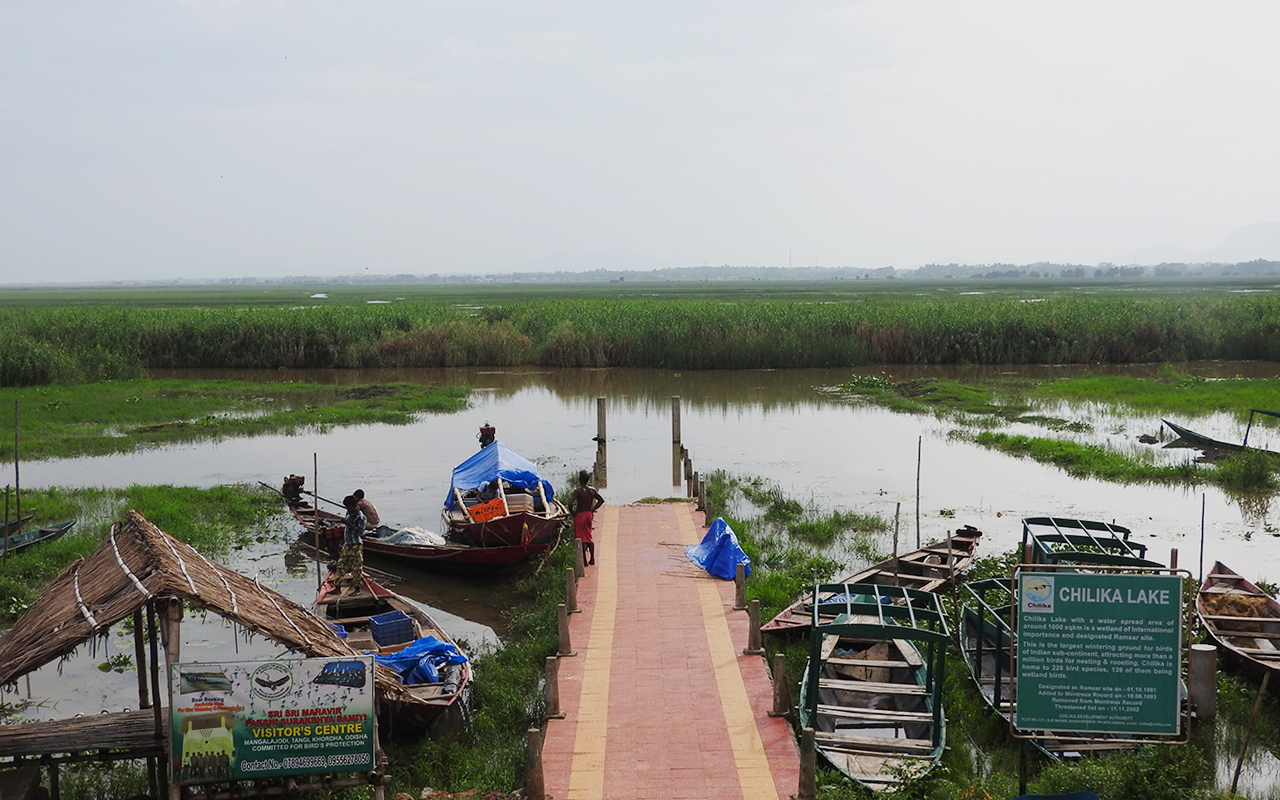
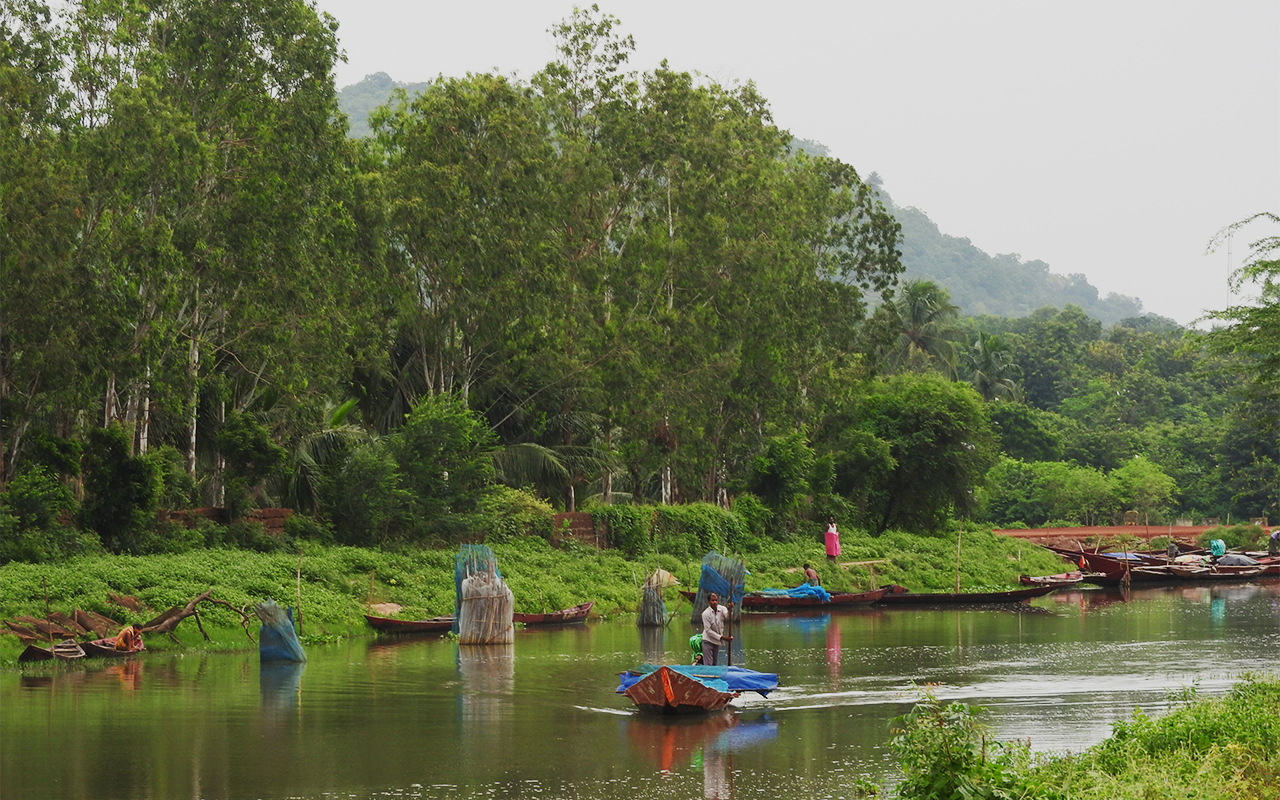
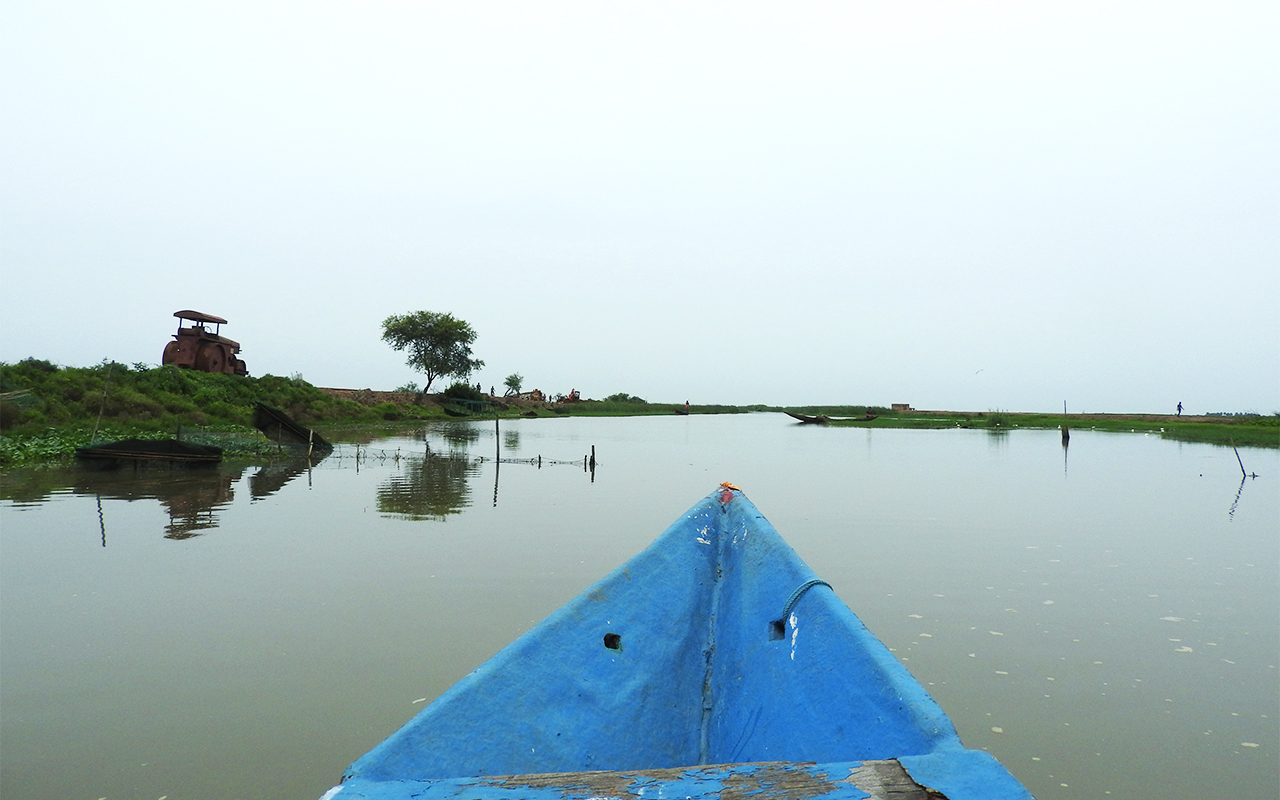
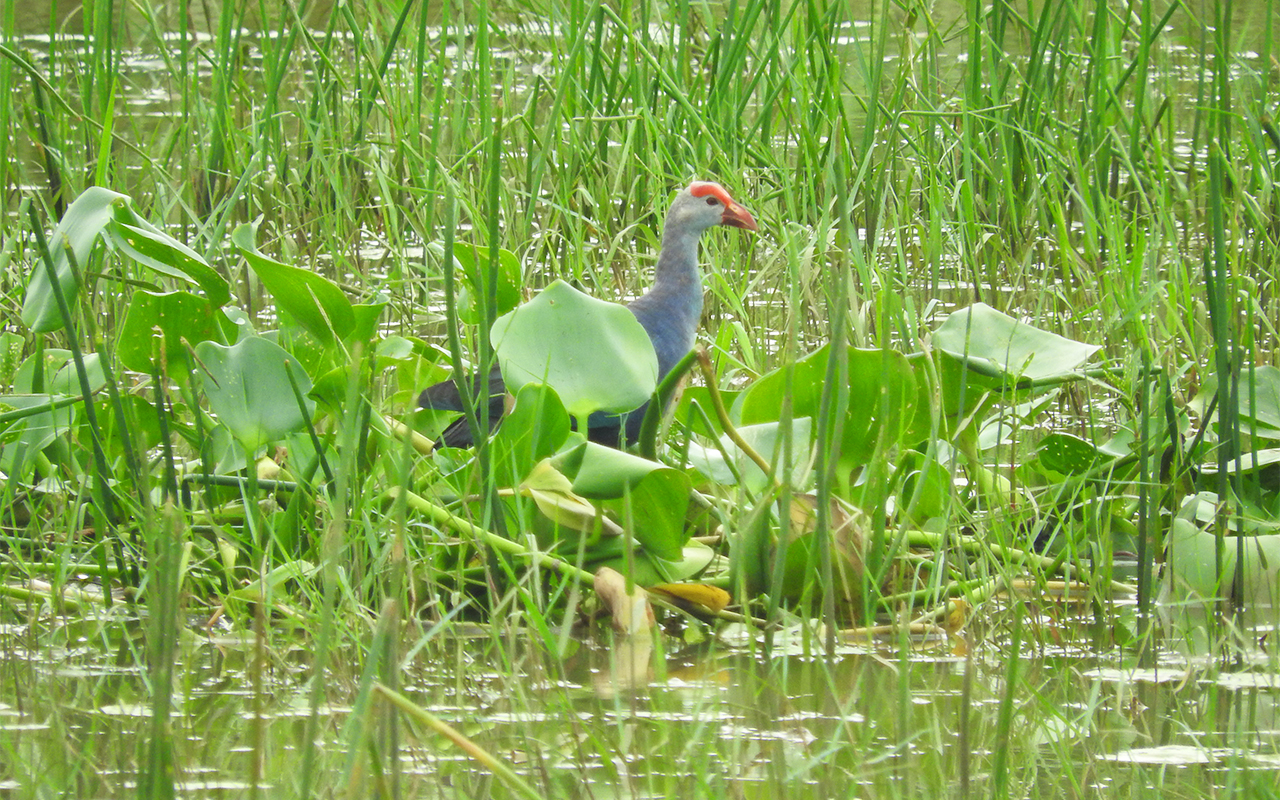
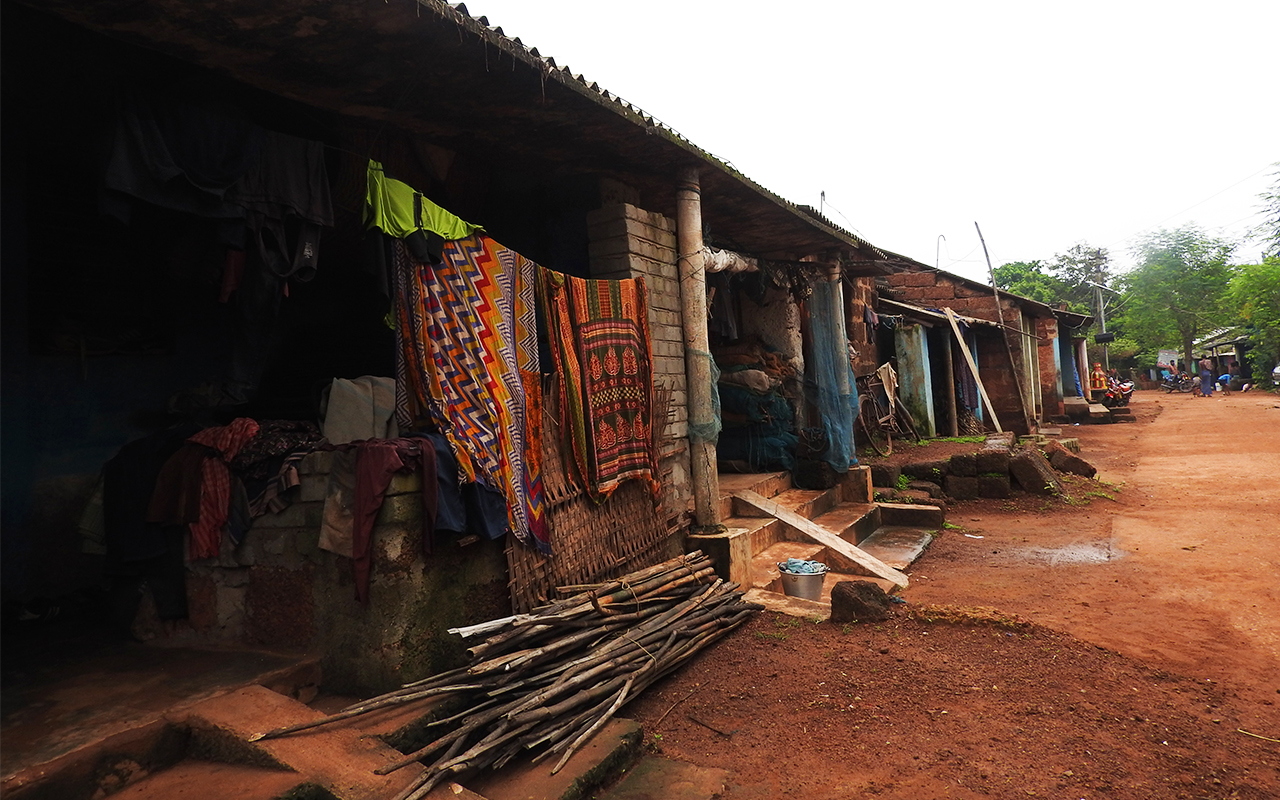
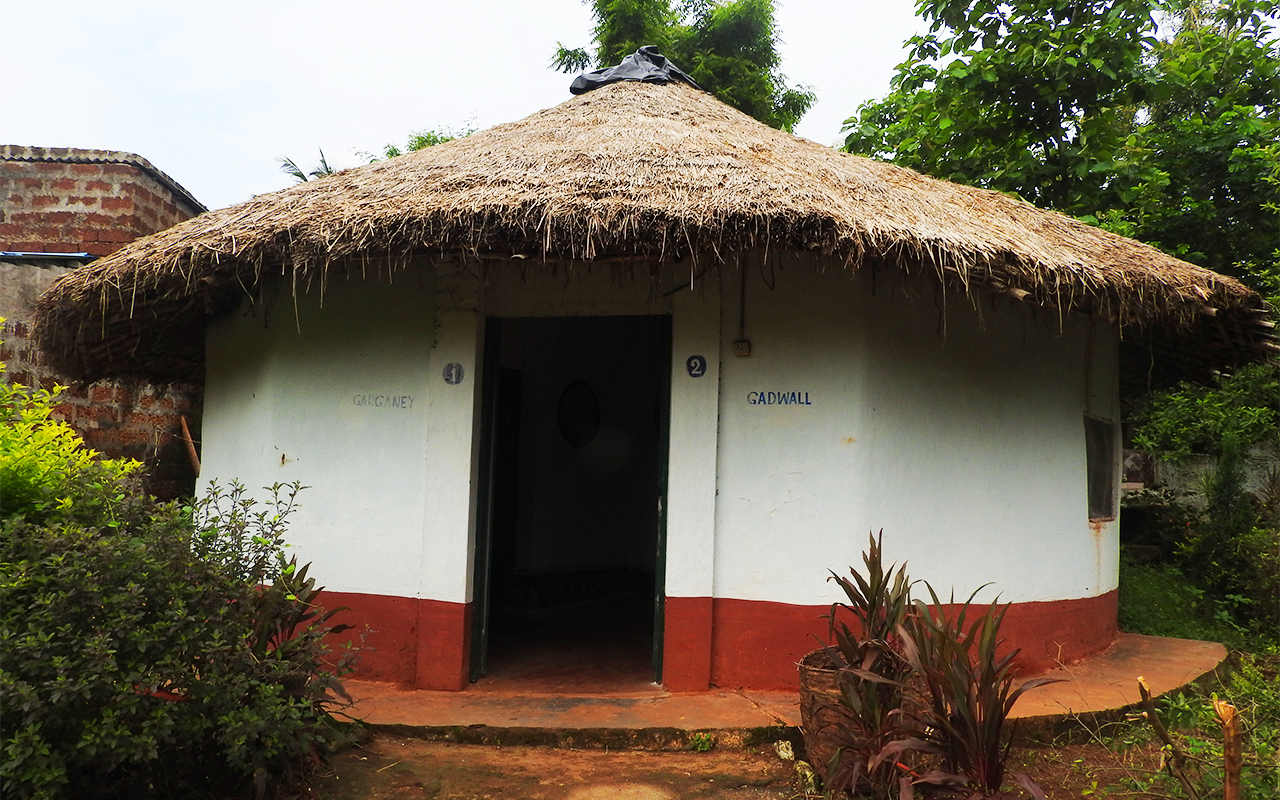
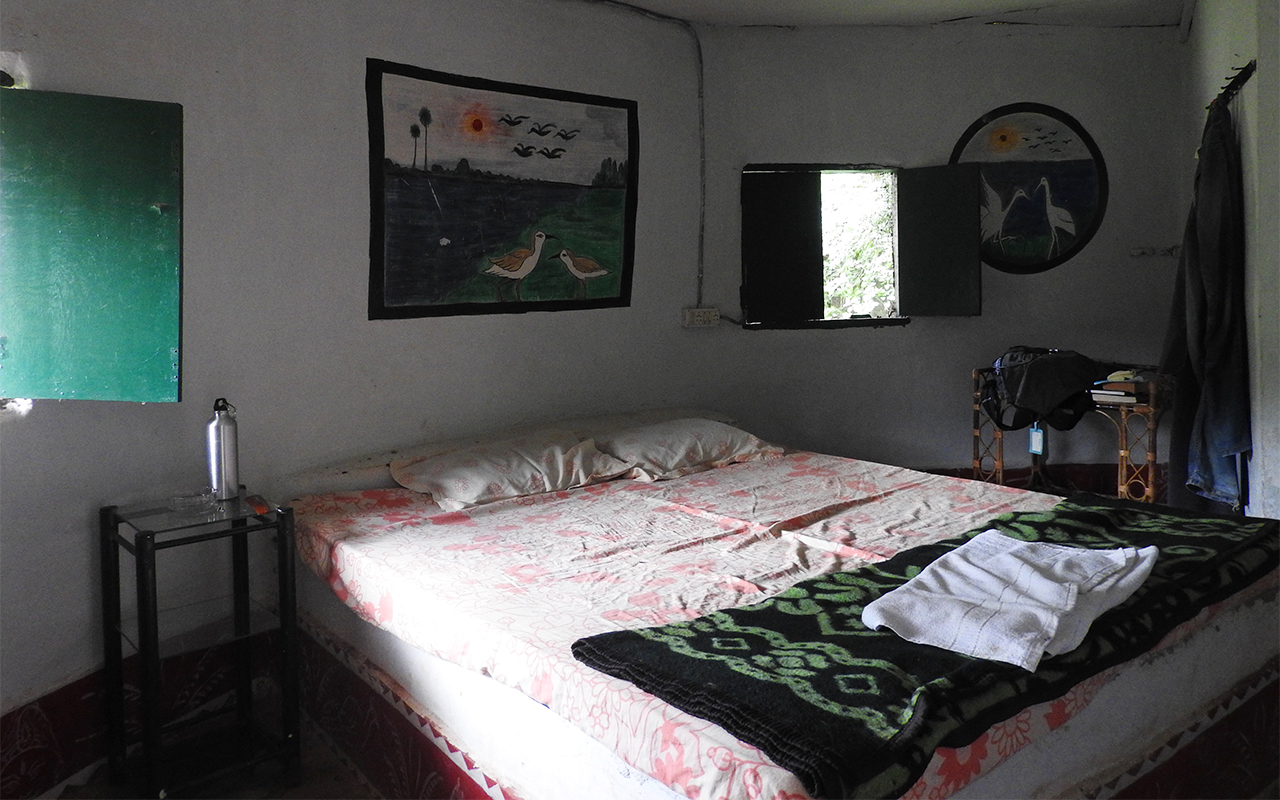
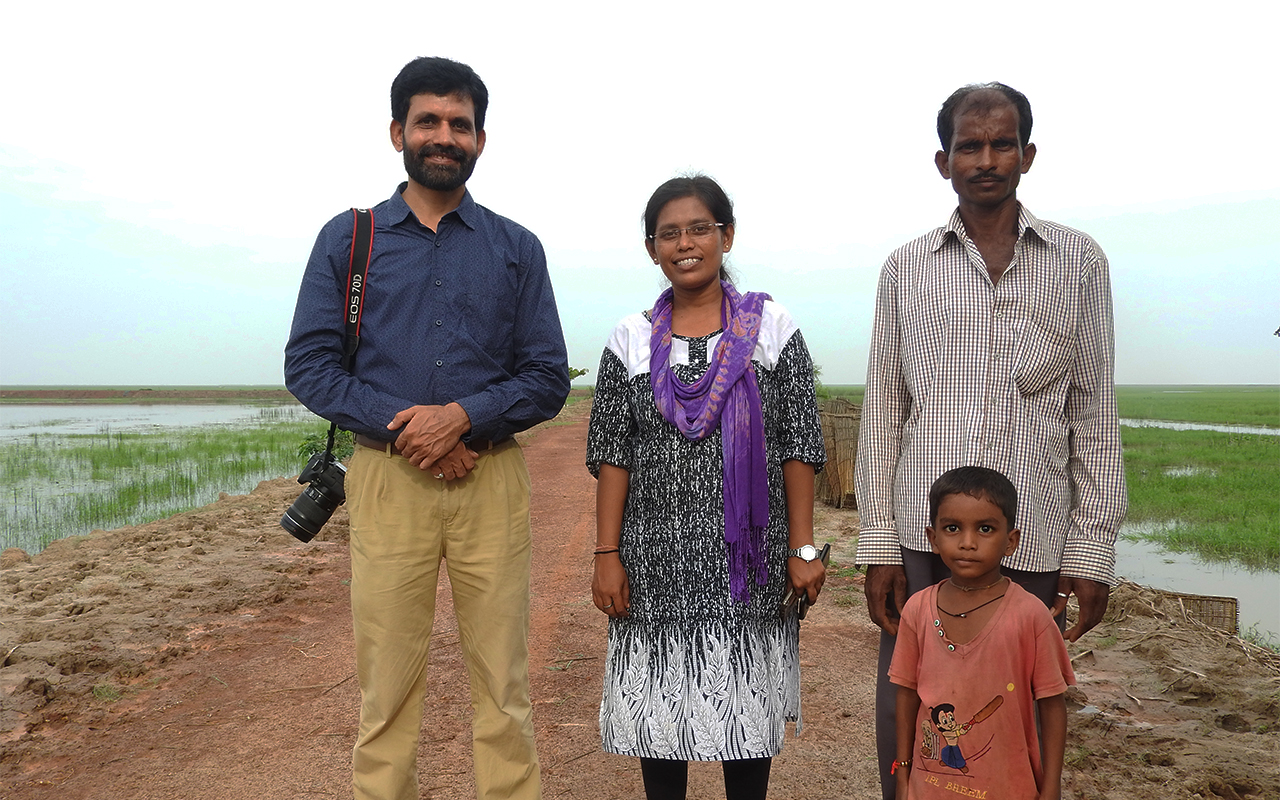
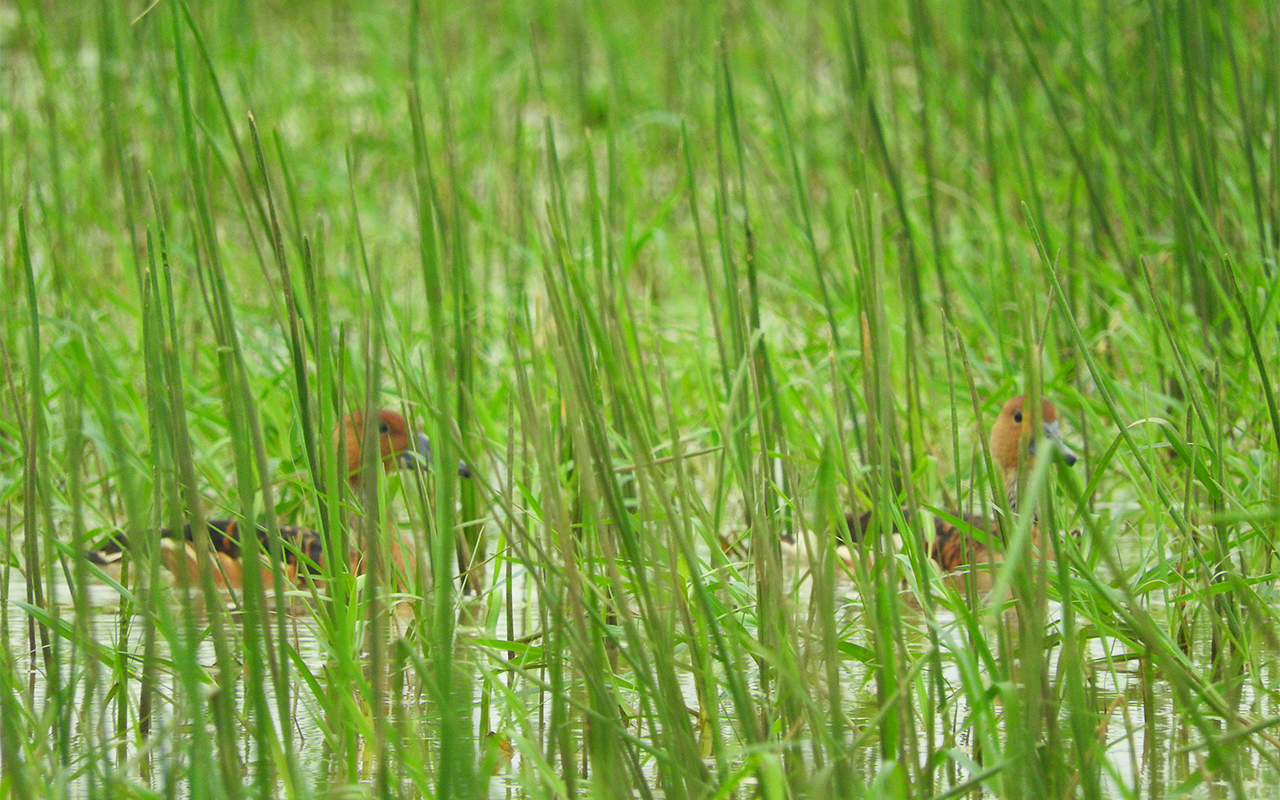
People doing good. Causes you can support. Subscribe for a weekly dose of inspiration.

Our Better World is the digital storytelling initiative of the Singapore International Foundation, which brings world communities together to do good.

Our Better World is the digital storytelling initiative of the Singapore International Foundation, which brings world communities together to do good.